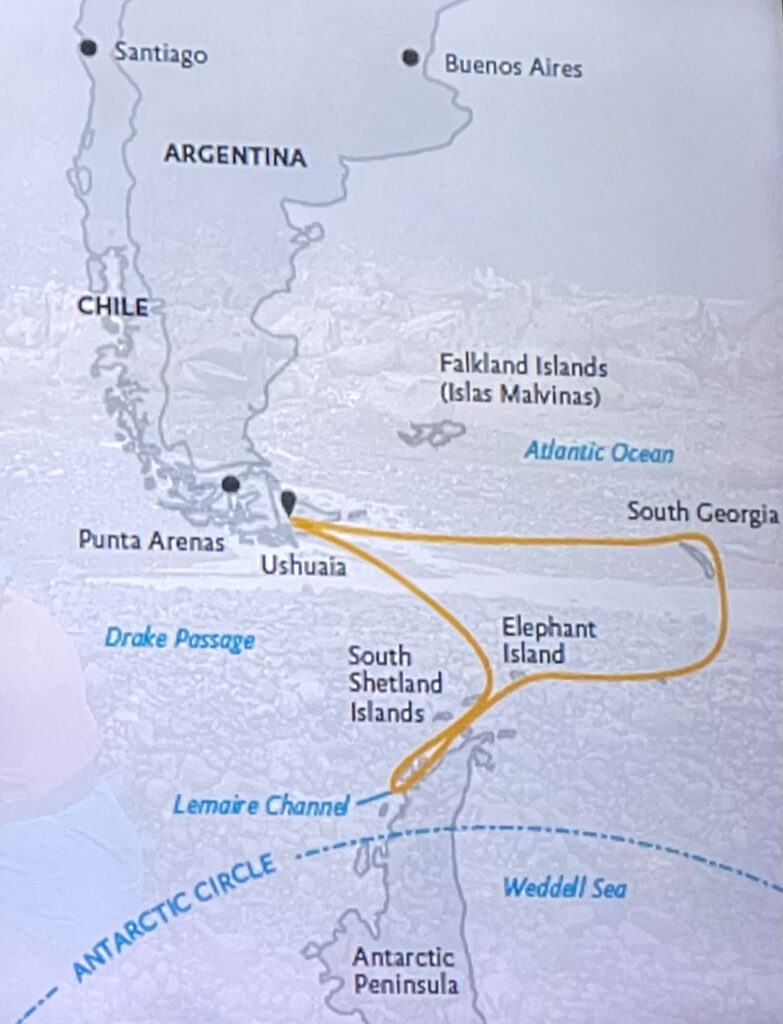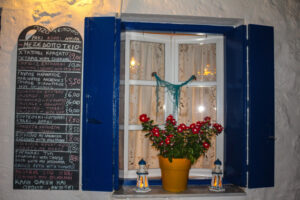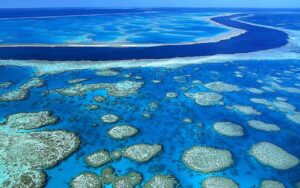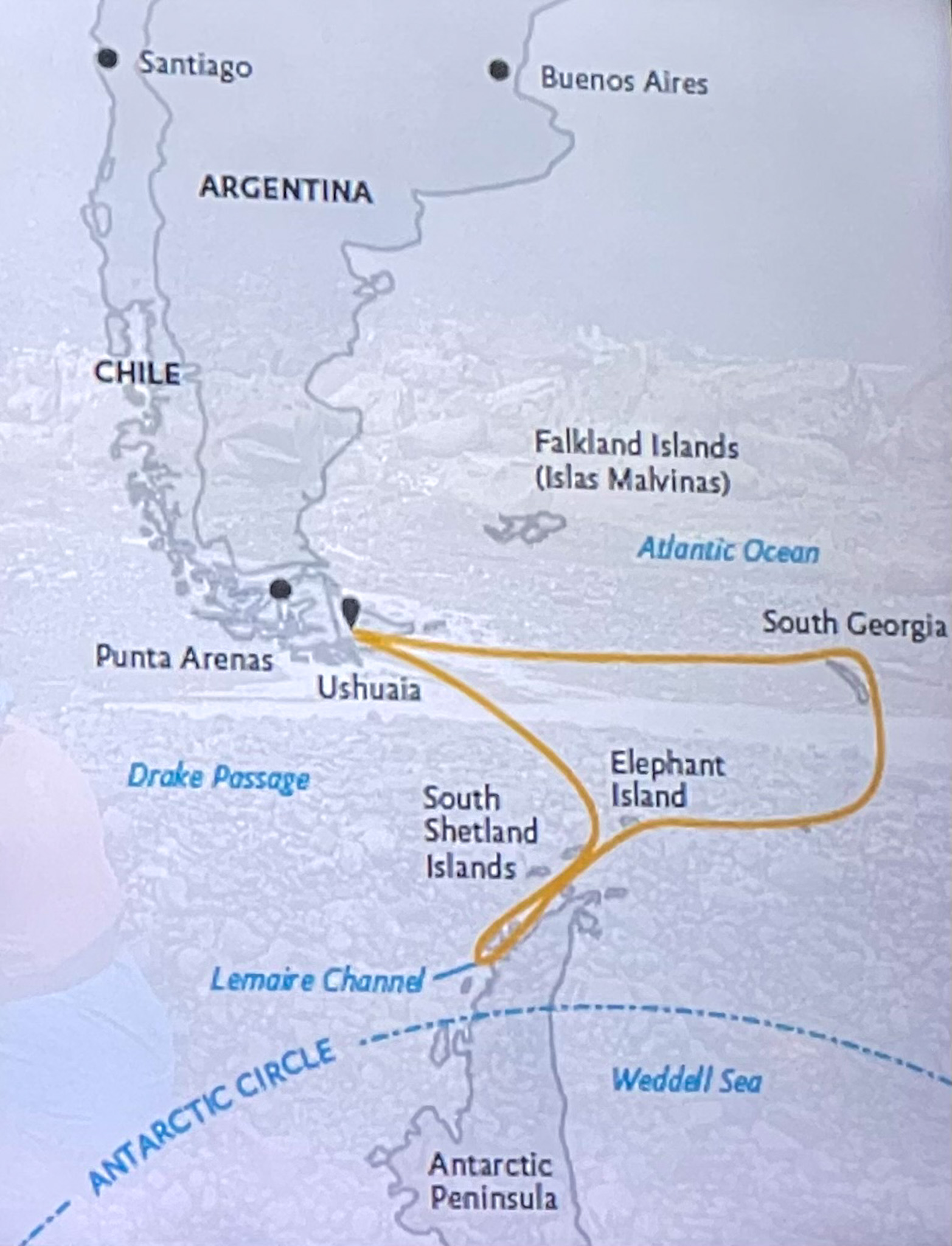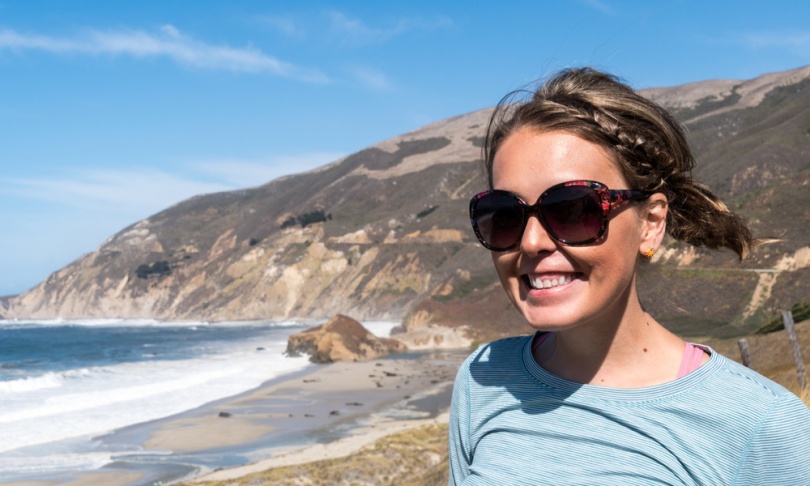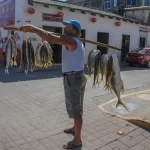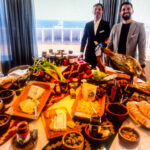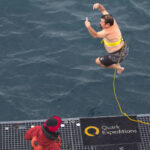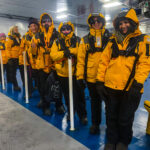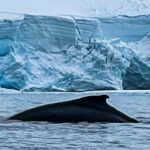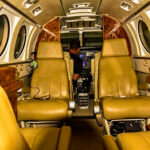I recently joined 127 other travelers on a 16-day voyage from Buenos Aires. Quark Expeditions newest vessel, the Ultramarine, crossed the tumultuous Drake Passage to South Georgia Island and the Earth’s Southernmost continent, icy Antarctica.
The only settlement on South Georgia is the hamlet of Grytviken. A landmark here is the grave of Ernest Shackleton, the charismatic polar explorer from Ireland. But we didn’t come for a tombstone: We came to see penguins, which inhabit the island in incredible numbers. On South Georgia, there are four species of penguins and more than 30 breeding bird species.
Quark Expeditions’ South Georgia and Antarctic Peninsula Penguin Safari. Since the early 1990s, Quark has been at the vanguard of polar expedition cruises.
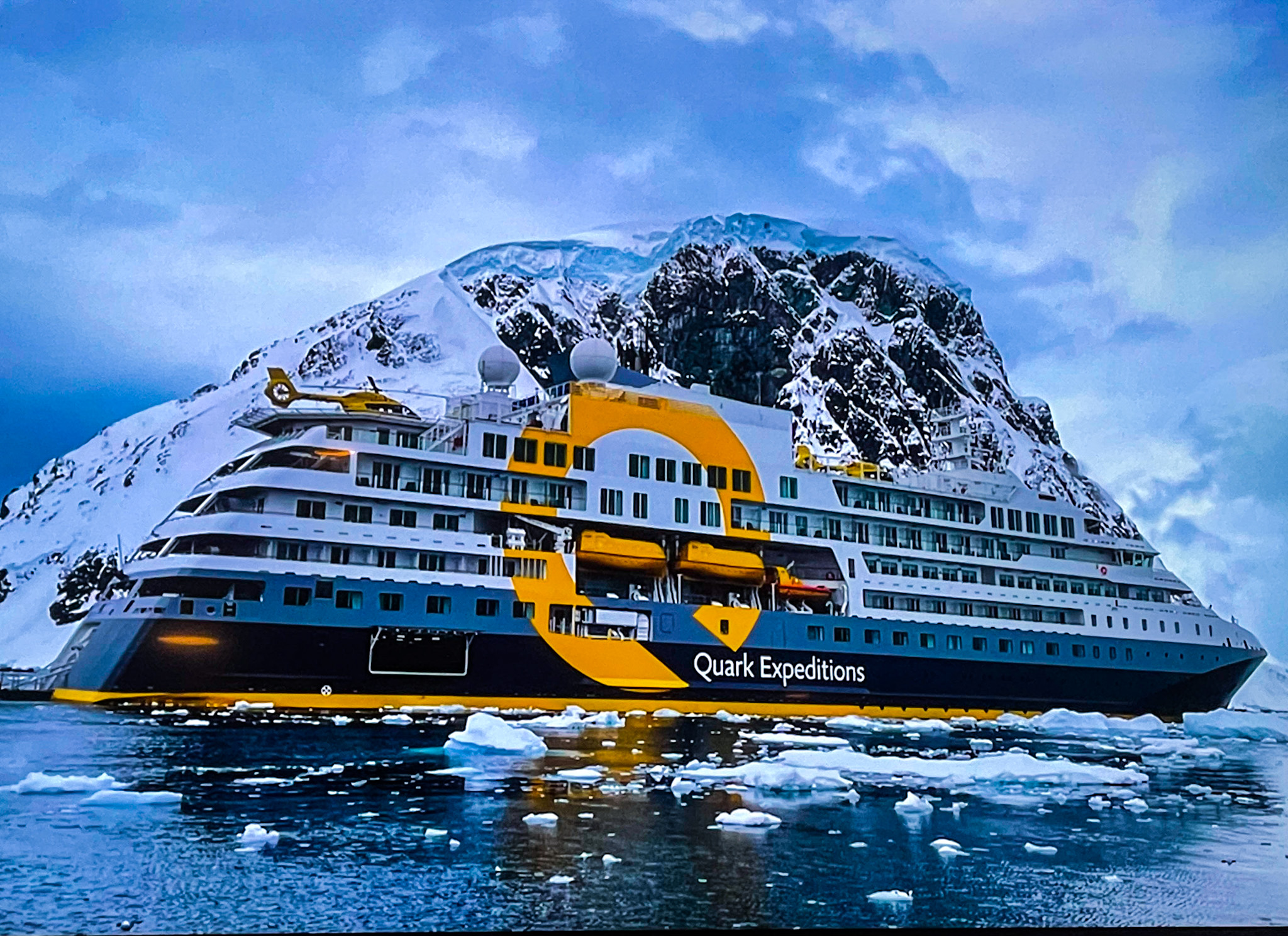
The Penguin Safari to these breathtaking, isolated regions is engineered by the newest vessel in Quark’s fleet. Launched in 2021, the Ultramarine accommodates 199 guests and 140 staff and crew. It is designed for comfortable sailings in rougher waters, including the treacherous Drake Passage.
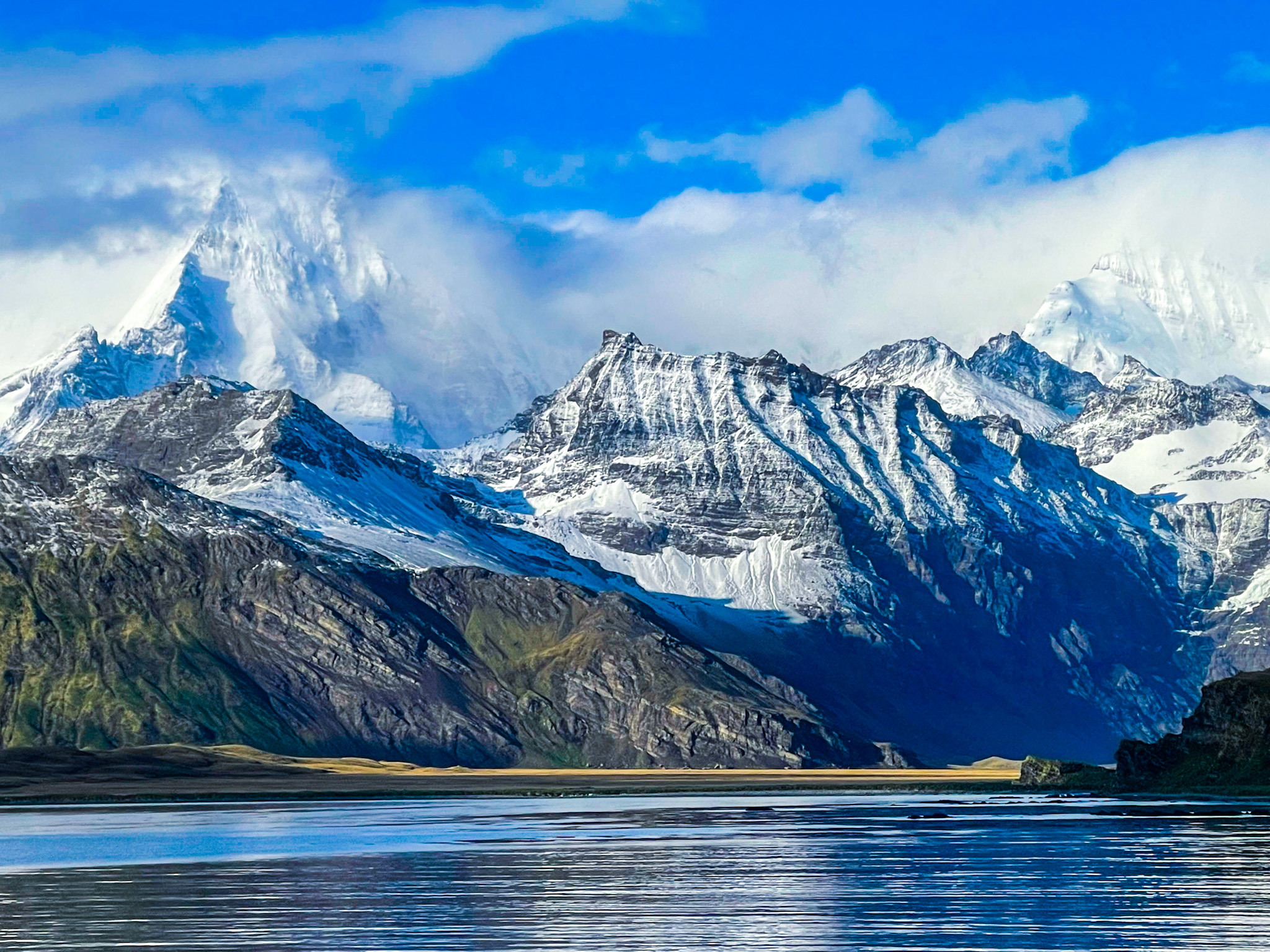
The southern polar region is a paradise for landscape photographers. Scenes like this — clouds floating over snow-capped peaks that tower over the open sea — must have enchanted Sir Ernest Shackelton.
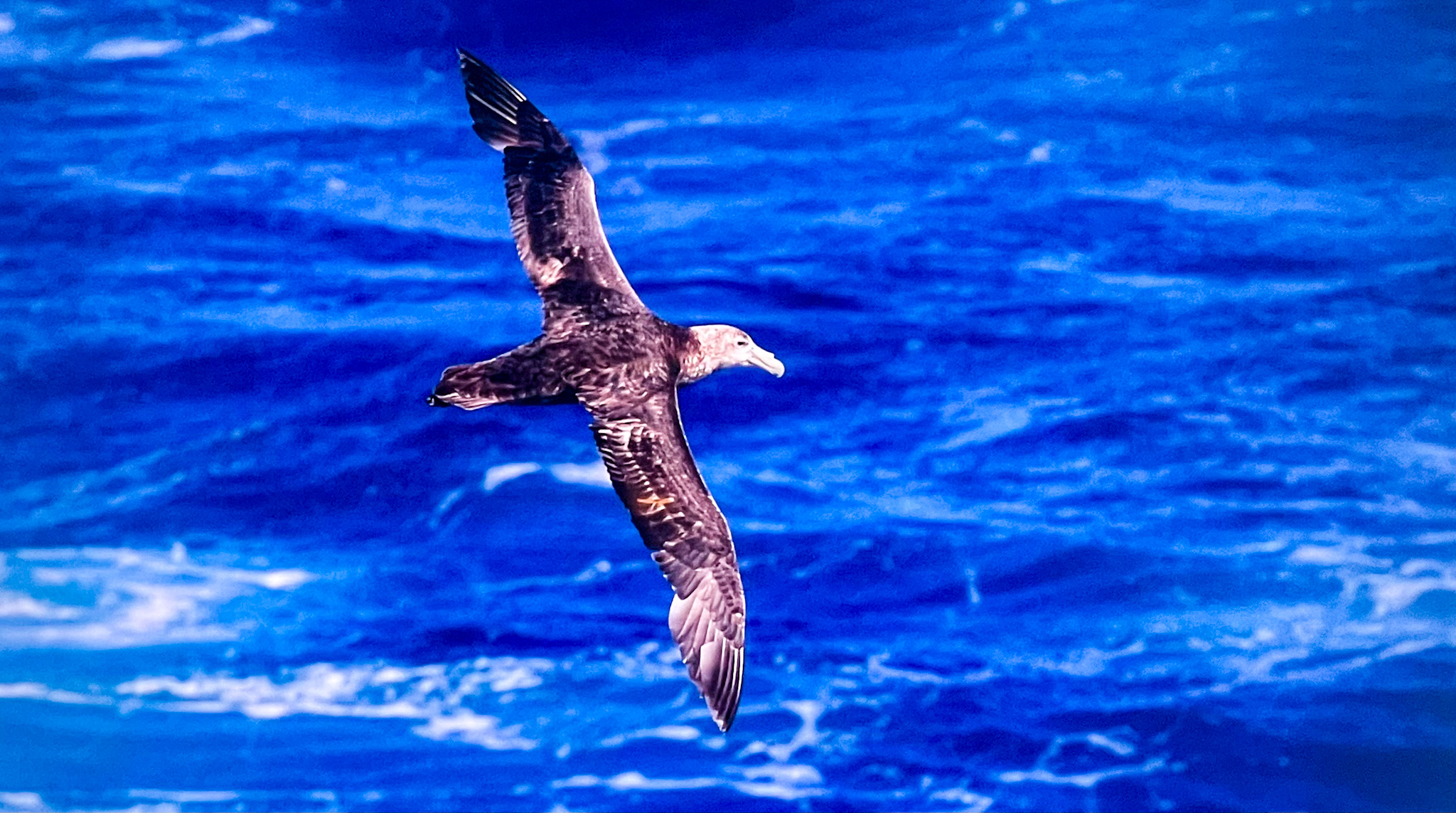
With its massive wingspan and large bill, the Southern giant petrel is among the more distinctive species of birds in the Antarctic region. The size of small albatrosses, which they resemble, their estimated global population is 50,000 pairs. Opportunistic scavengers, their diet includes albatross chicks and baby penguins.
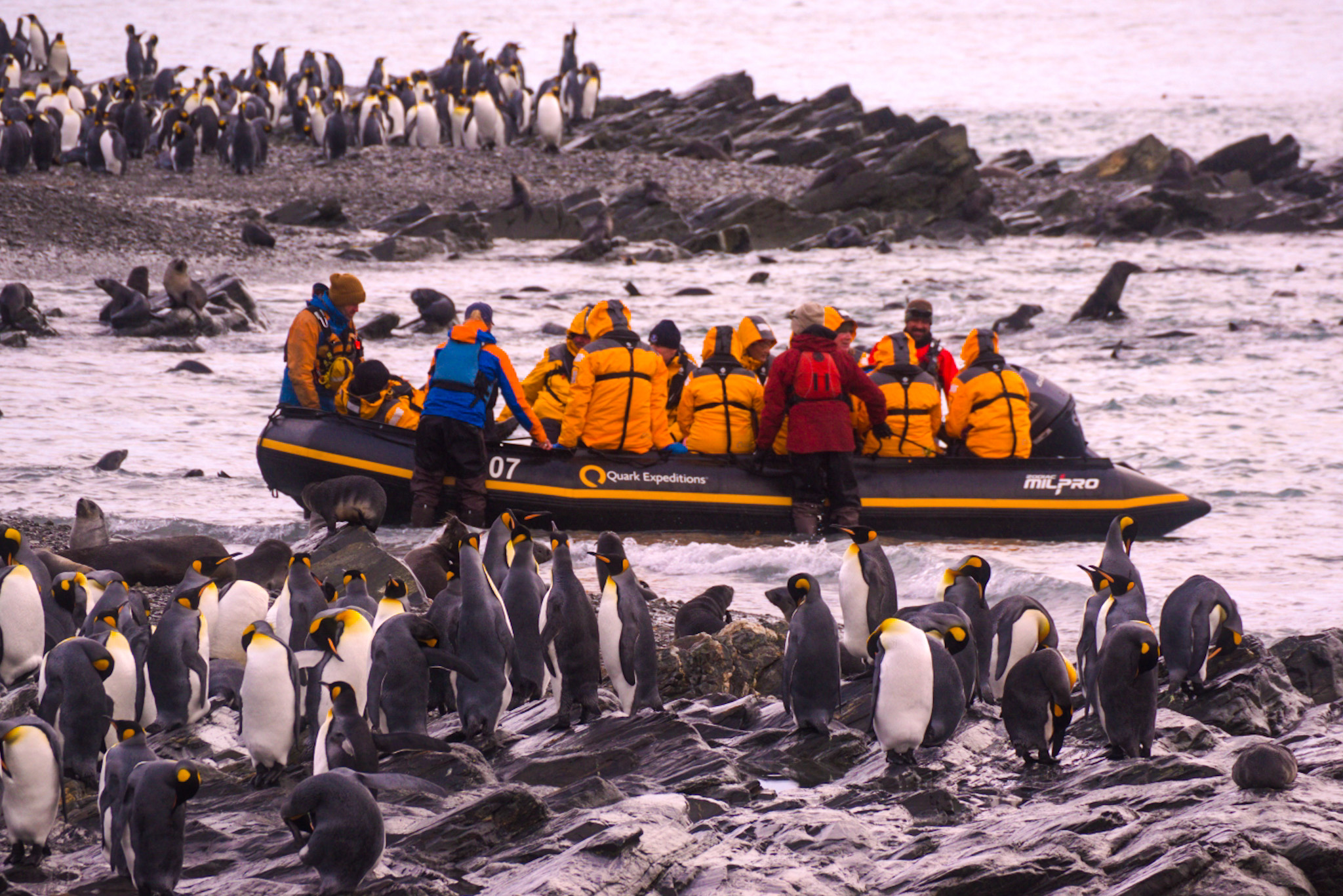
Quark travelers see four species of penguins. On South Georgia are hundreds of thousands of king and macaroni penguins, gentoo penguin colonies with 100,000 pairs, and a small number of chinstrap penguins. Other wildlife includes three species of albatross (black-browed, grey-headed and light-mangled), blue-eyed shags, Southern elephant seals and fur seals.
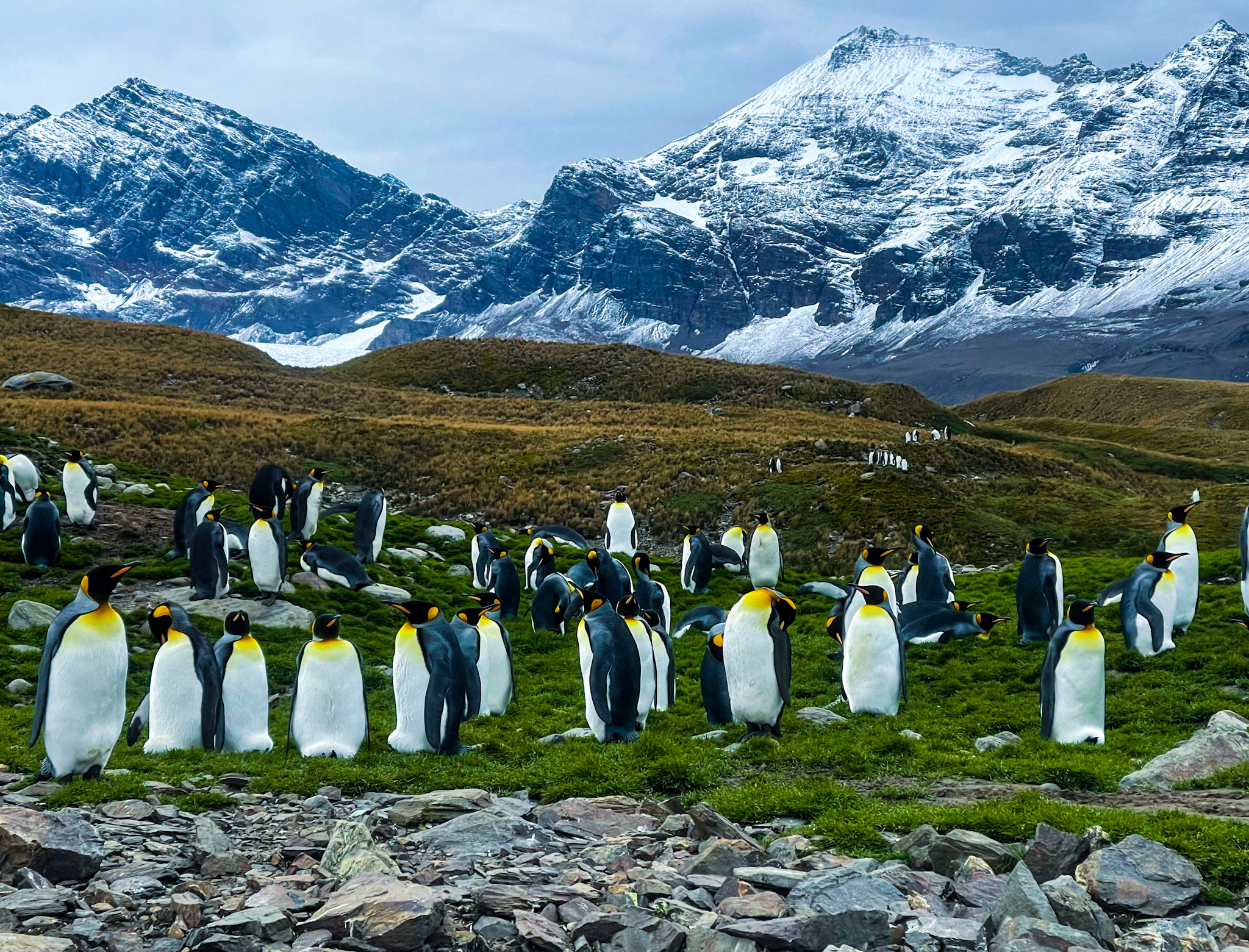
More than 100 miles long, crowned by glacial-covered peaks that rise to nearly 10,000 feet, South Georgia boasts a beautiful landscape teeming with penguins and seals. Expedition ships visit between December and March.
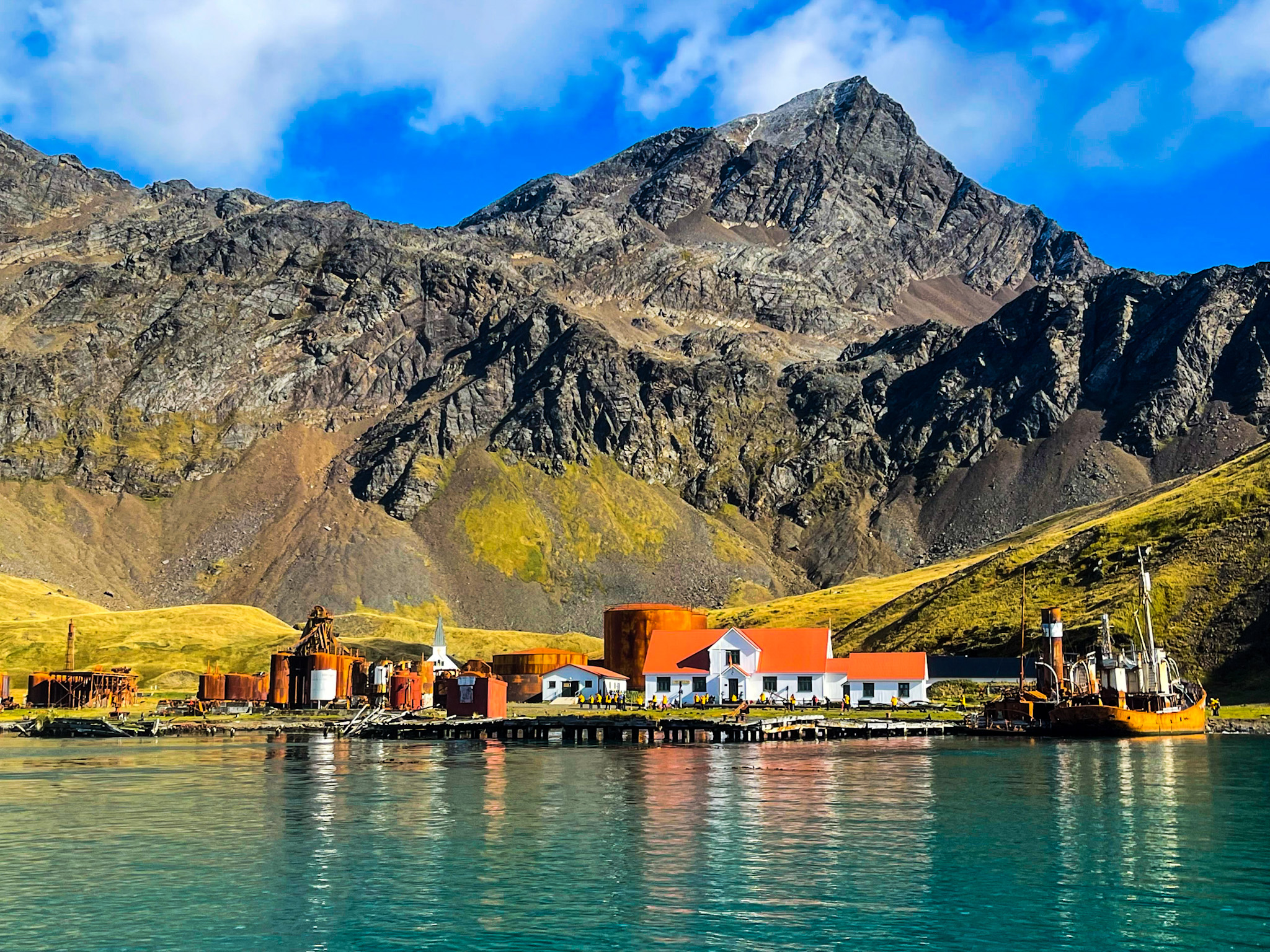
After three days at sea, we made a Zodiac landing at Grytviken, the lone settlement on South Georgia Island. Thirty temporary residents — scientists and researchers — live on the mountainous 1,362-square-mile island, sometimes called “the Galapagos of the Poles.
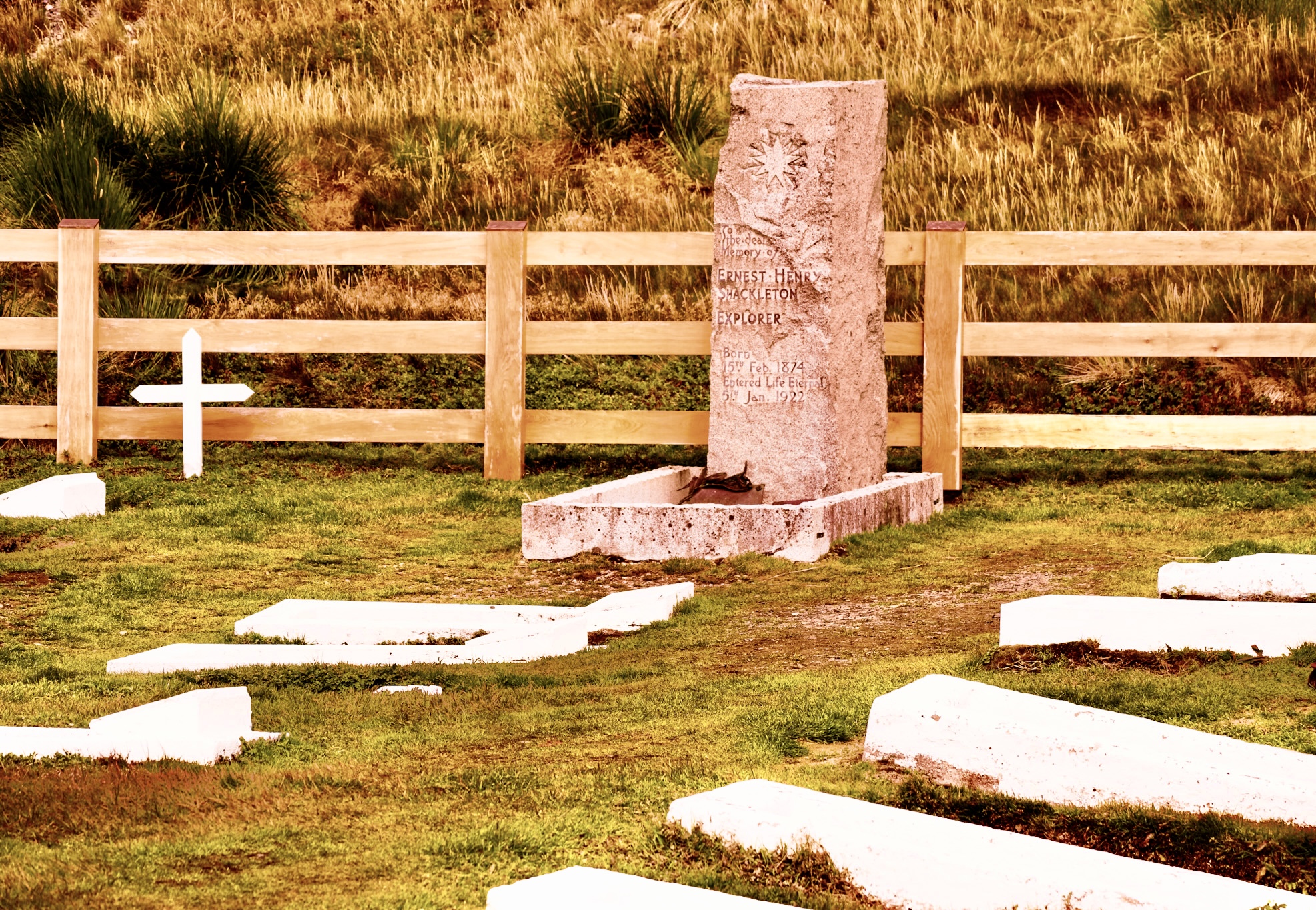
The grave of explorer Sir Ernest Shackleton (1874-1922) is a highlight of any visit to South Georgia. Shackleton’s 800-mile crossing from desolate Elephant Island — aboard the tiny James Caird,only slightly larger than a modern zodiac — was one of the bravest of its time.
These were the last words Shackleton wrote before he suffered a fatal heart attack: “A wonderful evening. In the darkening twilight, I saw a lone star hover, gem-like above the bay.
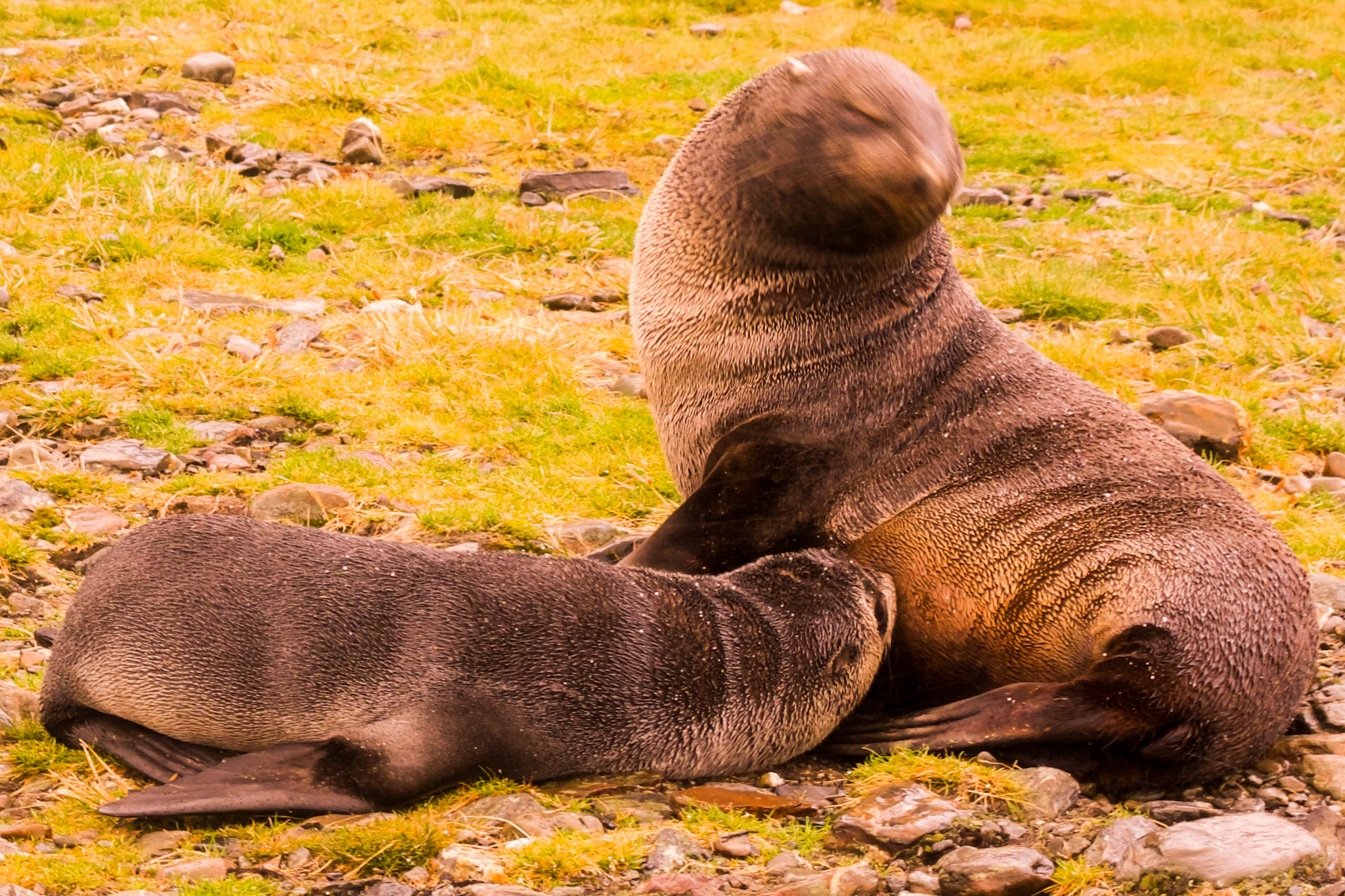
According to estimates, nearly 2 million Antarctic fur seals live in South Georgia.
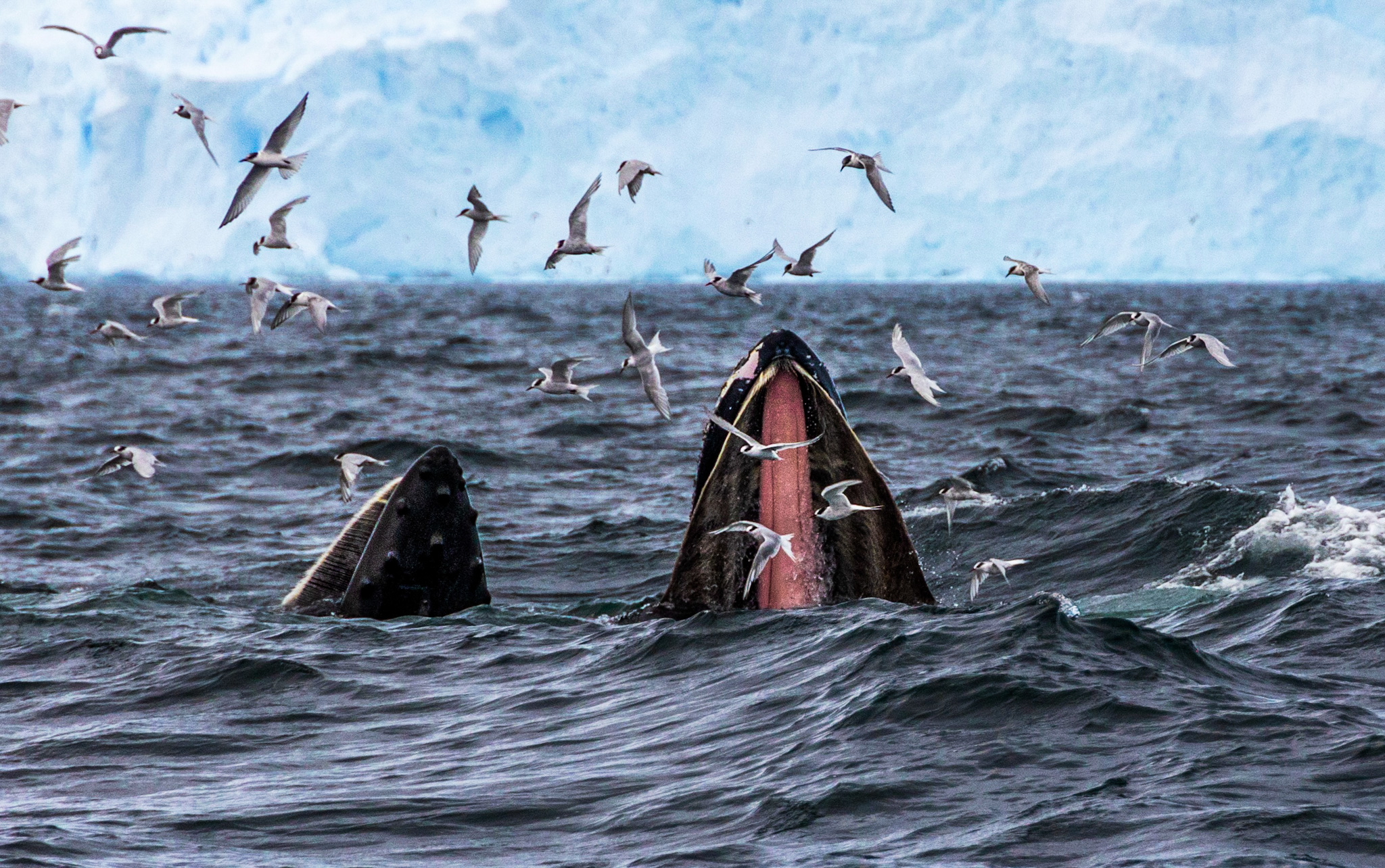
The Ultramarinecrosses the Antarctic Circle (at 66 degrees 33 minutes South) to reach the Antarctic Peninsula. The voyage is abundant with minke, humpback, right, blue sperm, and killer whales.
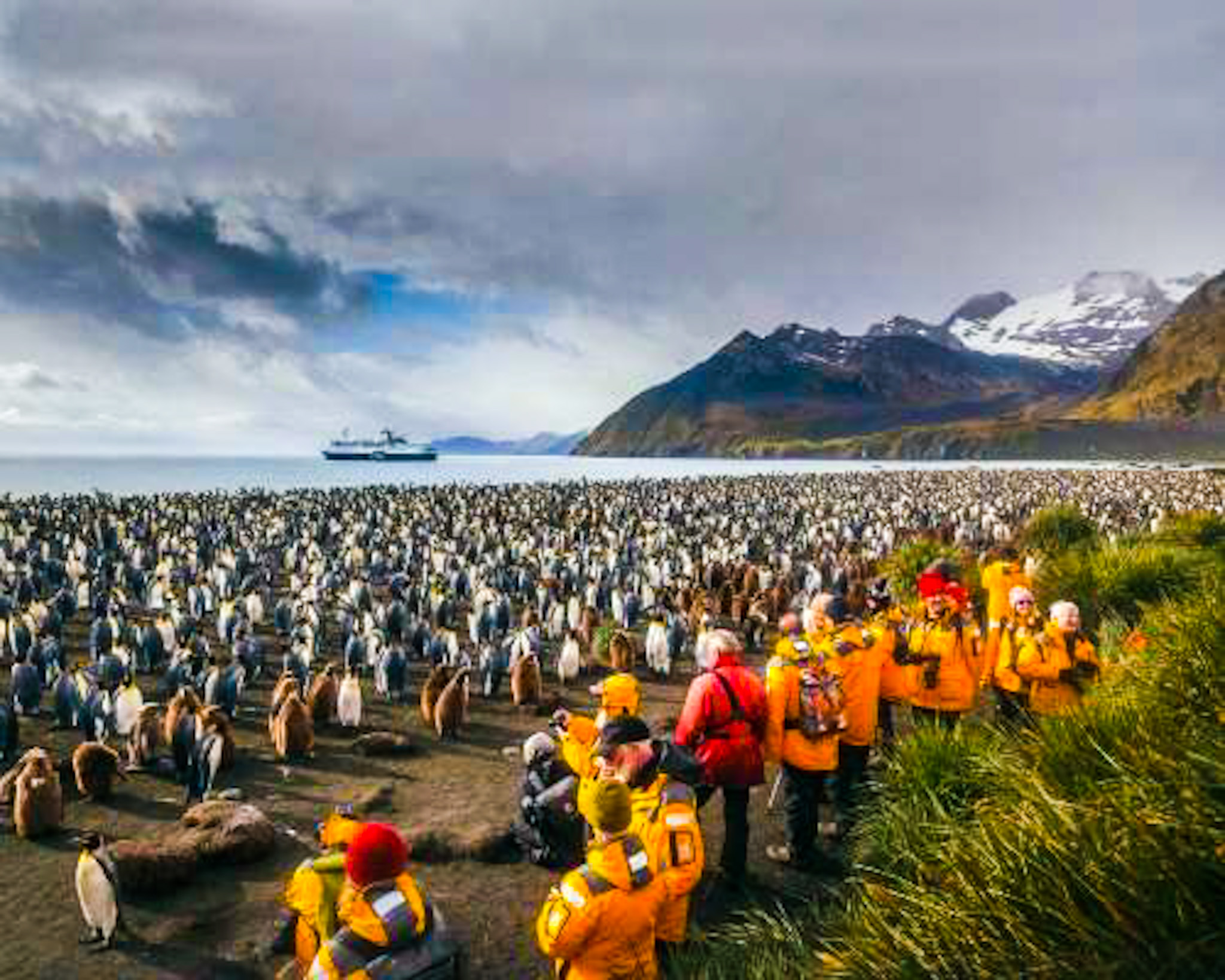
A visit to South Georgia is highlighted by the island’s diverse wildlife amid glaciers and fjords. Hundreds of thousands of massive but flightless king penguins live in a colony on the Salisbury Plain.
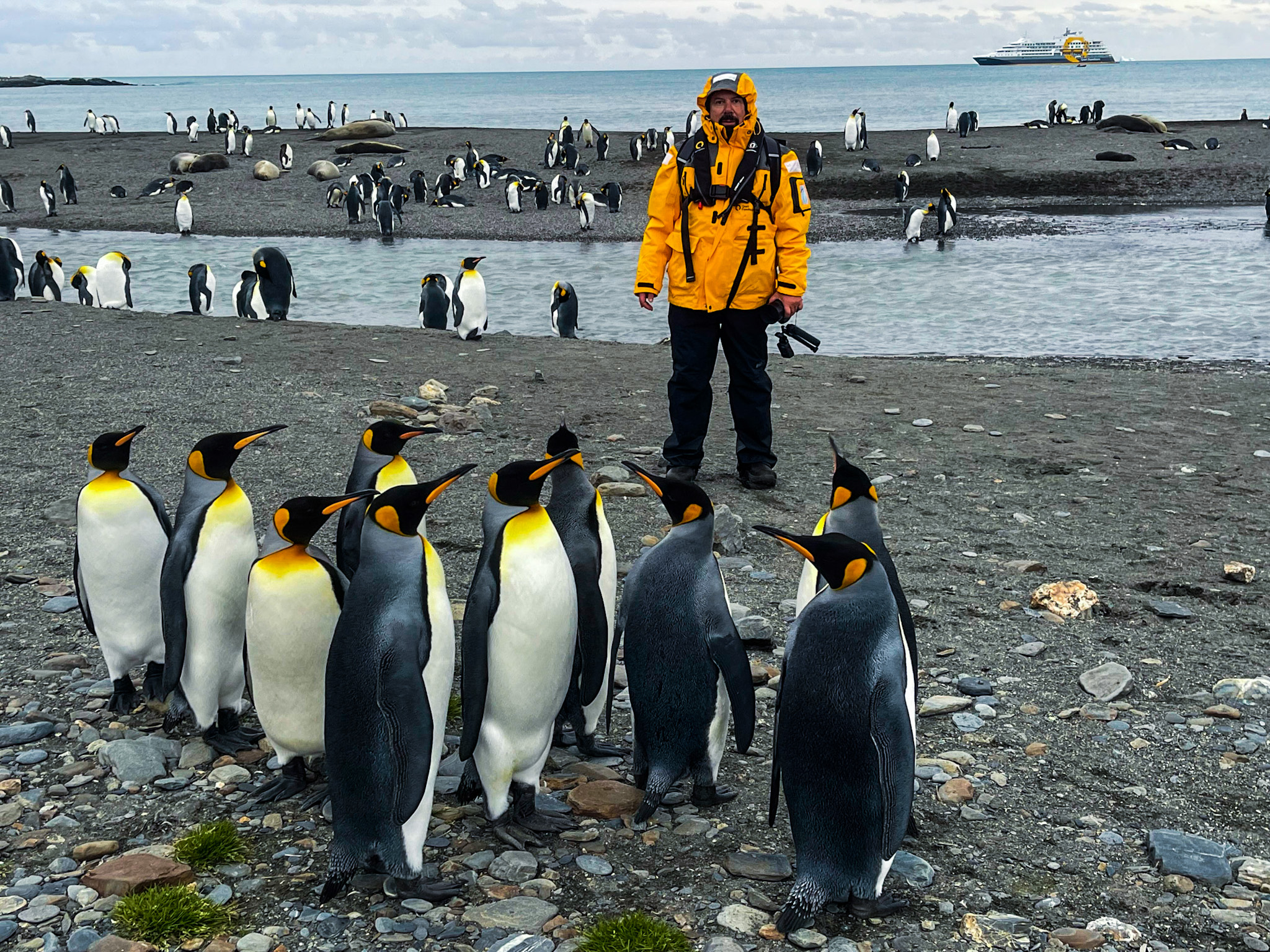
South Georgia beaches teem with king penguins … as I stand in the background. Quark reminds its guests to keep at least 15 feet from king penguins, distinguished by their burnt-orange beaks and seals.
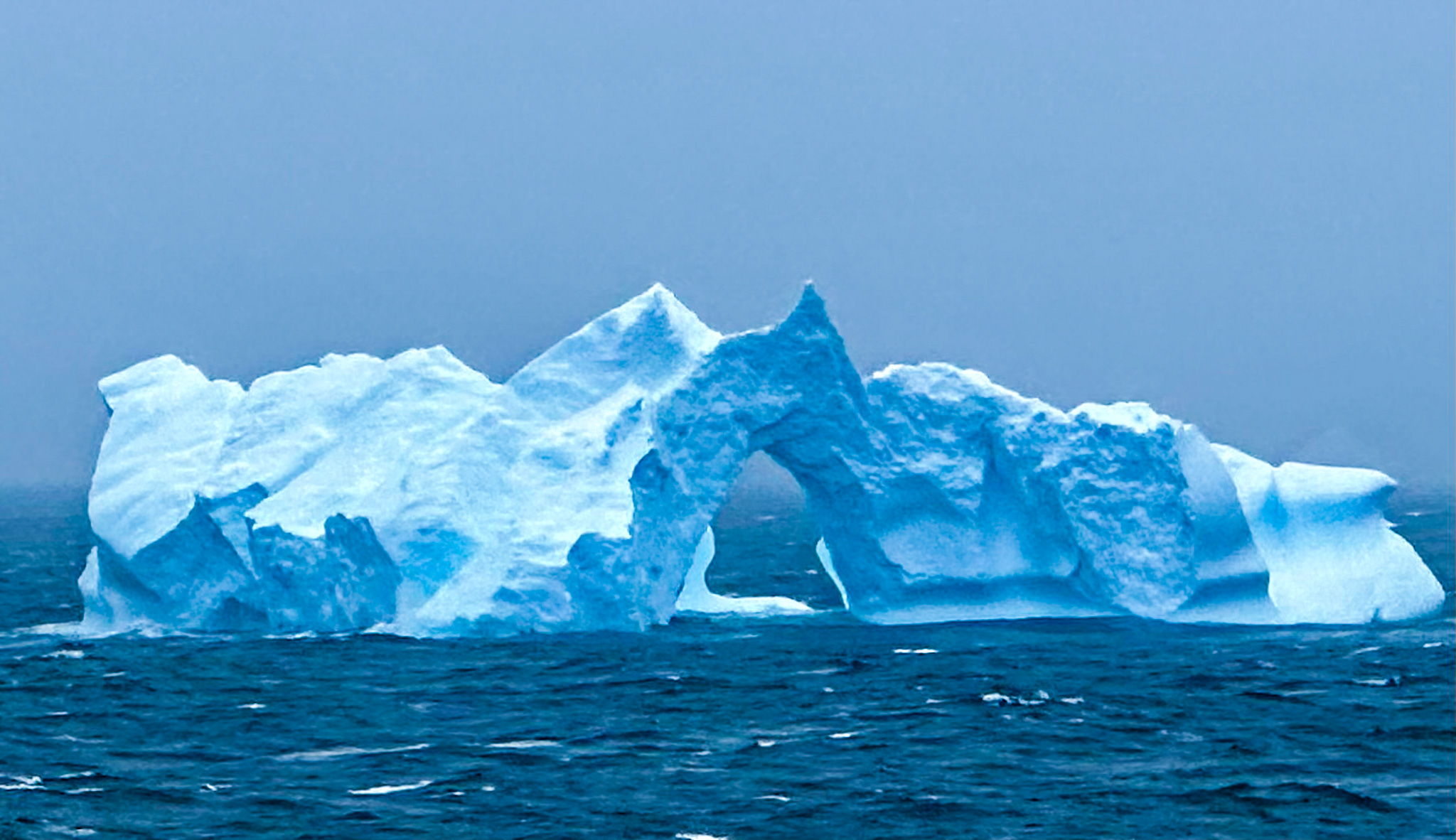
Icebergs break off glaciers and float freely in the open Antarctic waters. They vary in size and shape. These stunning natural wonders found only in polar regions, are seen by Quark passengers onboard the ship and up close on zodiacs.
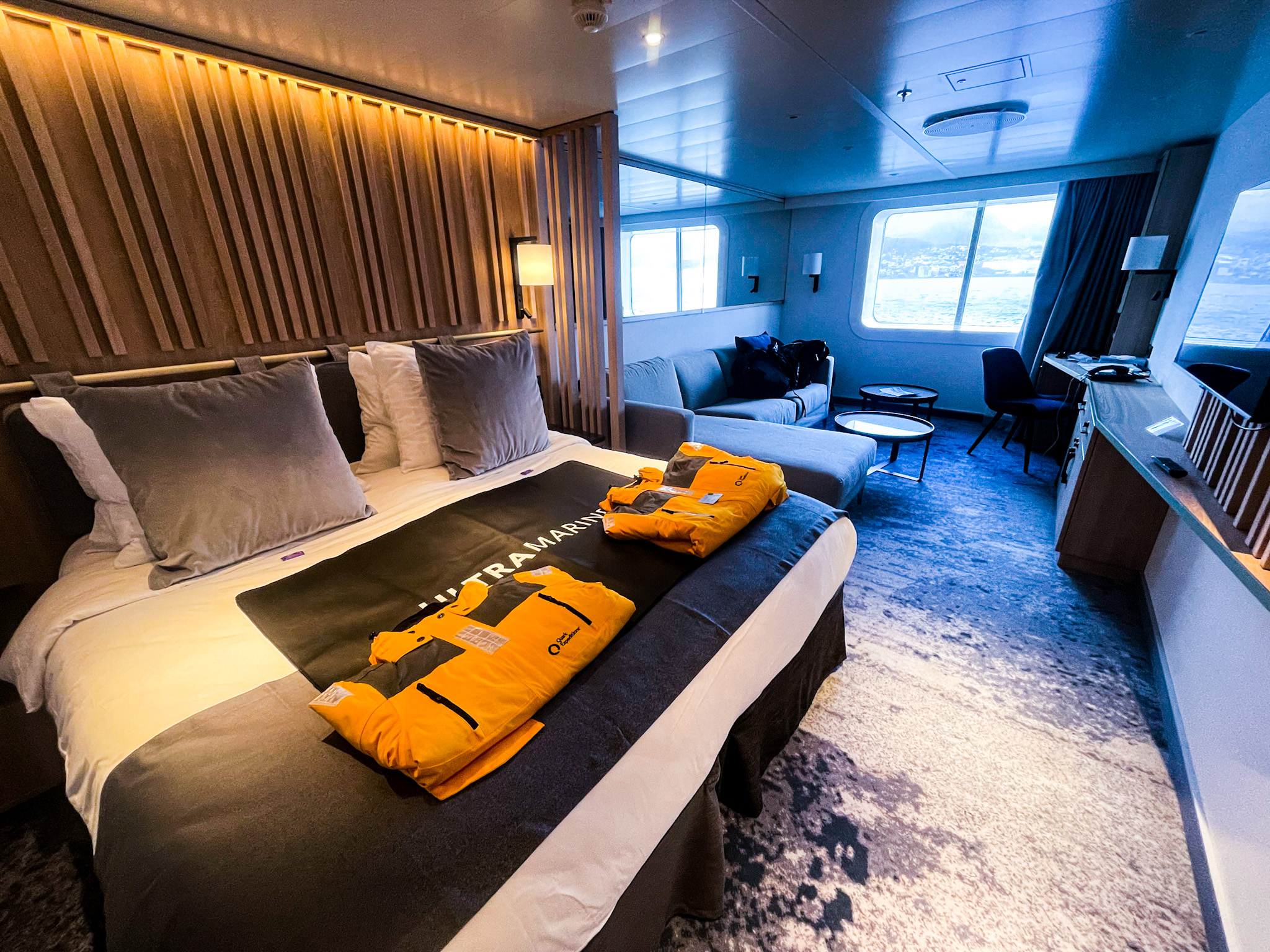
On many expedition cruises, vessel accommodations are small and basic. Those on the Ultramarine are at once cozy and spacious.
All 76 rooms — 30 Explorer Suites and 46 Balcony Suites (with 52-square-foot verandas) — have oversized windows facing to sea. The homey quarters provide more-than-ample space for expedititioners to relax during breaks from zodiac landings.

As with all expedition sailings, zodiacs are used to transport guests to and from the ship, primarily as they seek out wildlife.
My South Georgia sailing included 128 guests, of whom 76 came from the United States, 16 from Canada, 14 from Australia, eight from the United Kingdom and the balance from other countries. Antarctic guides, trained to operate these inflatable boats, ensure a safe journey.
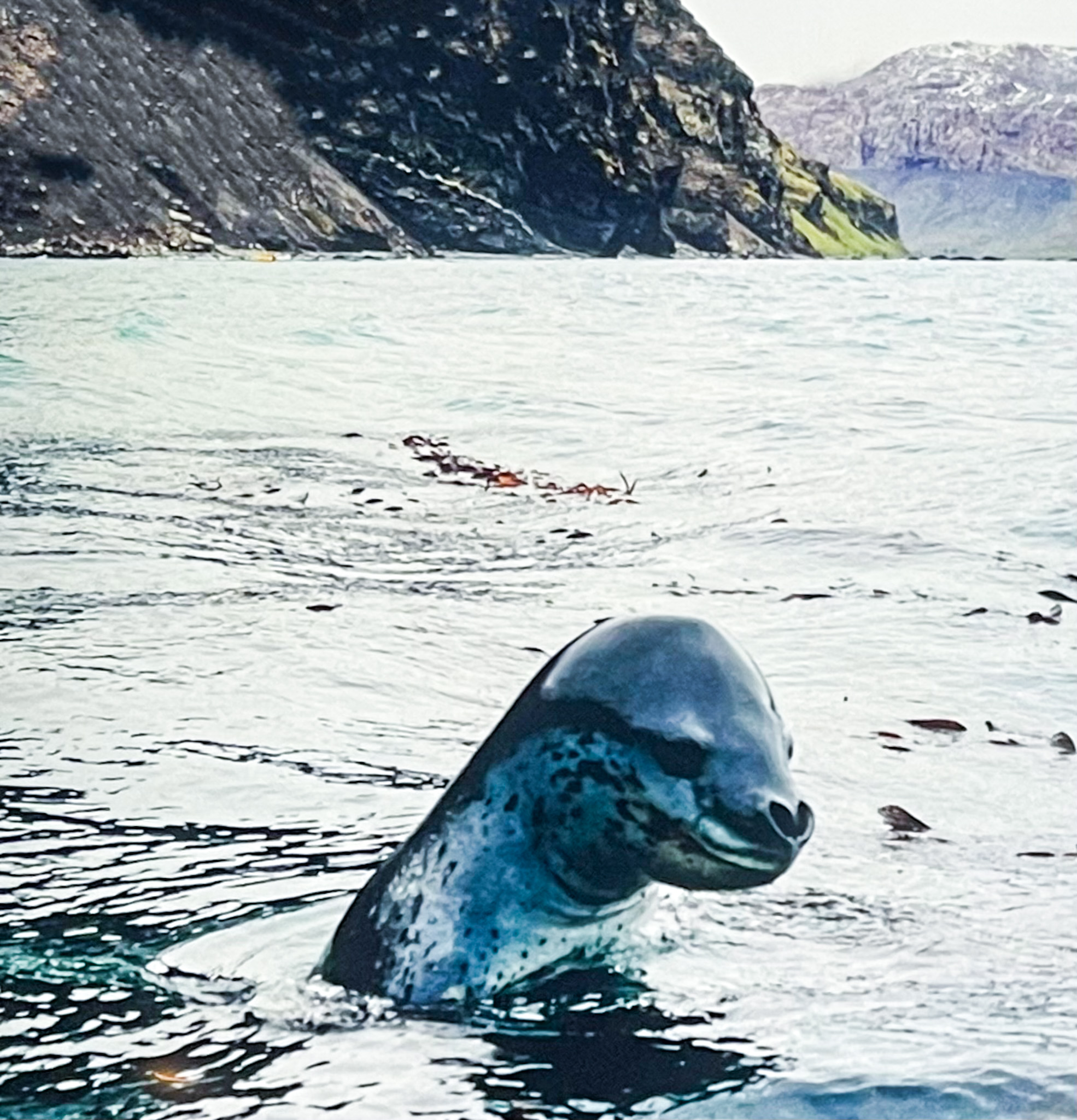
Anything is possible on zodiac excursions. This rare sighting of a slender leopard seal, bobbing its head out of the water, became a coveted part of our polar wildlife experience. They eat almost anything, including fish, squid and crustaceans. Some capture prey at the edges of penguin colonies.
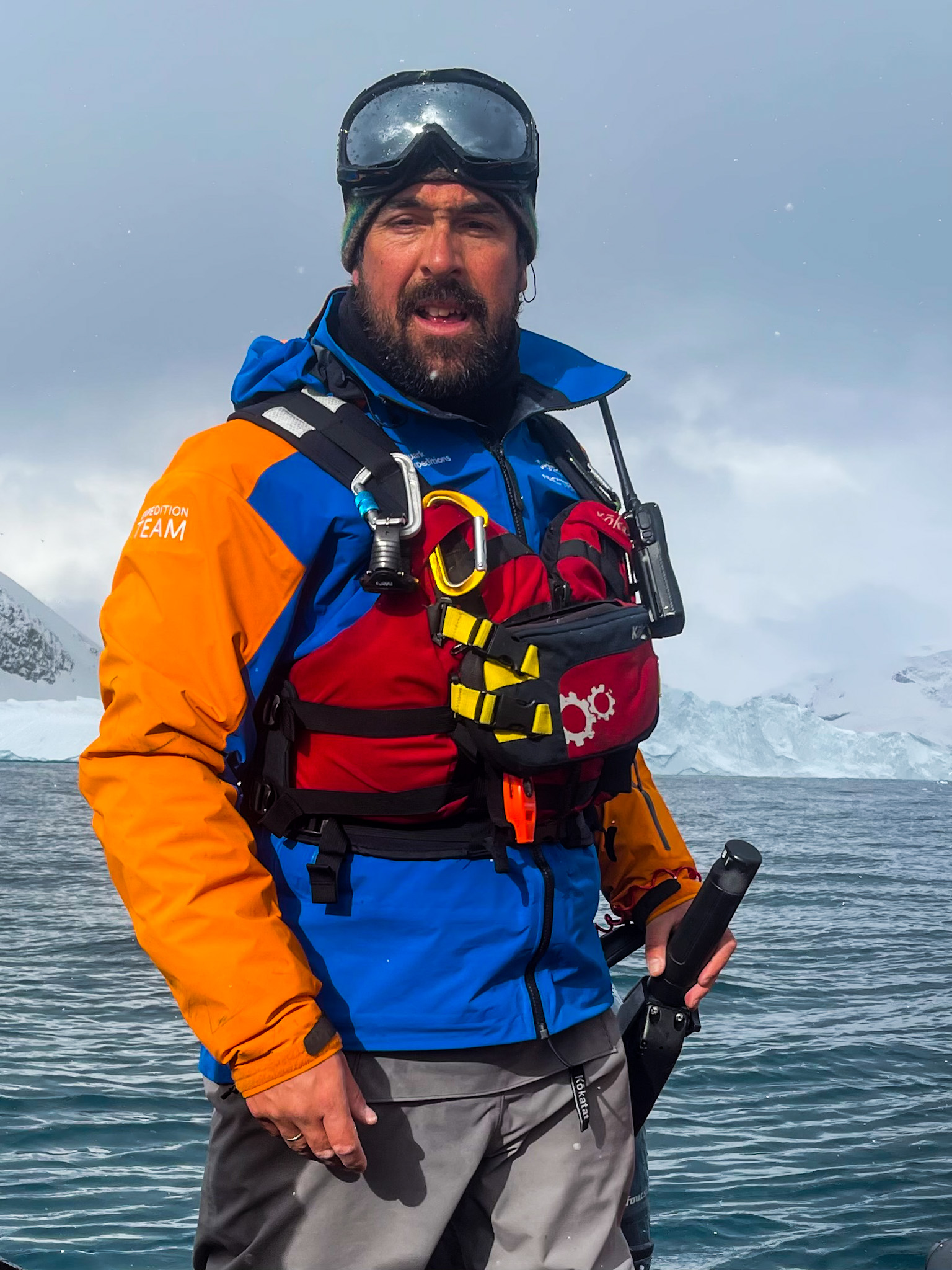
Guests always remember the tireless work of the expedition leaders, including guides, zodiac captains and the hospitality team.
“I’m blessed to work with knowledgable and experienced professionals,” said expedition leader Alison Gordon from Australia.
On my sailing, the crew and world-class naturalists came from 30 countries. Trained at the Quark Academy they were experts in history, marine biology, ornithology, geology, sea kayaking and more.
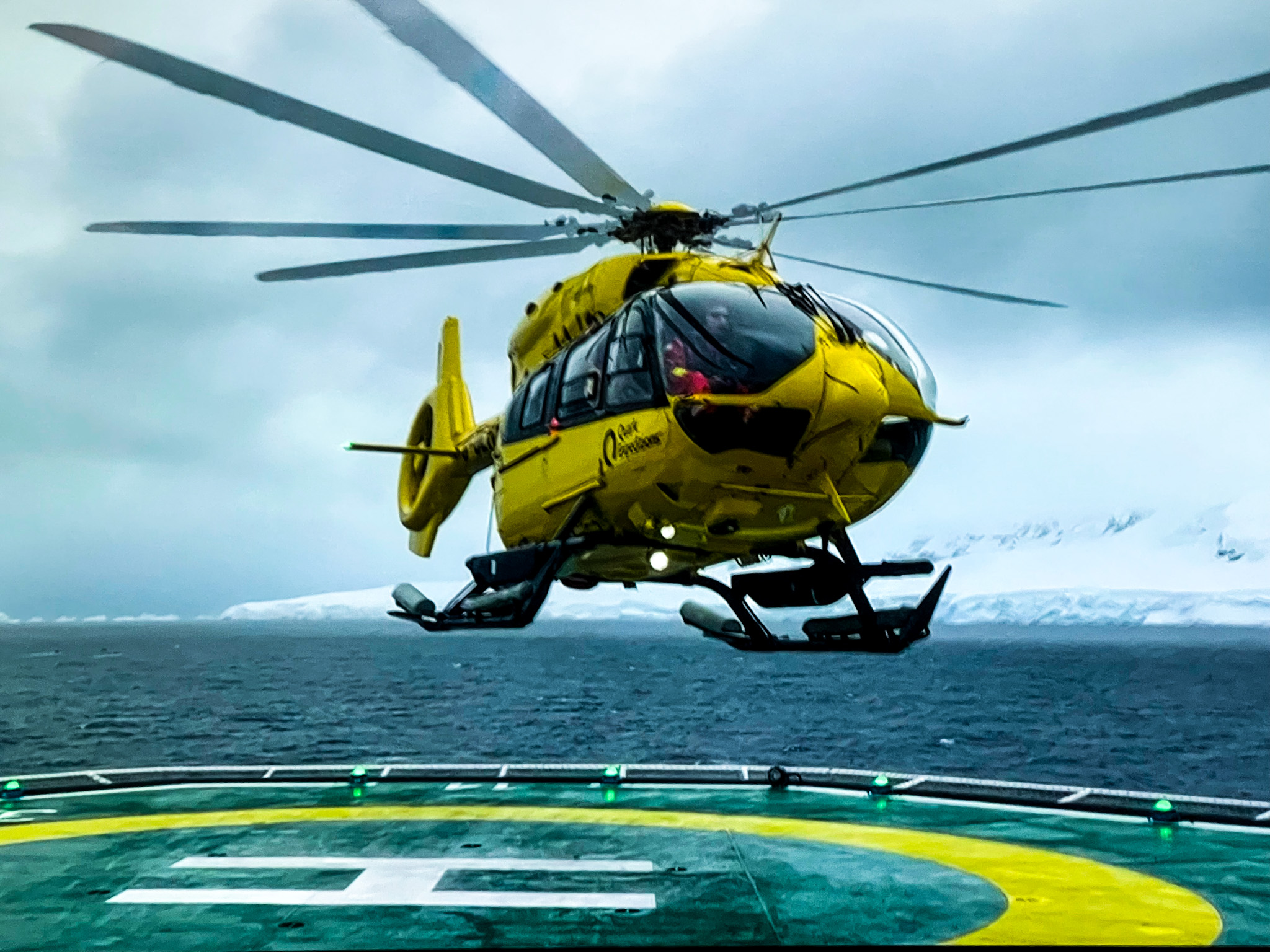
What more could an expedition traveler want? Atop the Ultramarine, on the Deck 8 helideck, are two twin-engine Airbus helicopters, Weather permitting, they shuttle groups of passengers on sightseeing ventures.
Some flights land at hard-to-reach locations, where Quark stellar team members lead hikes and excursions.
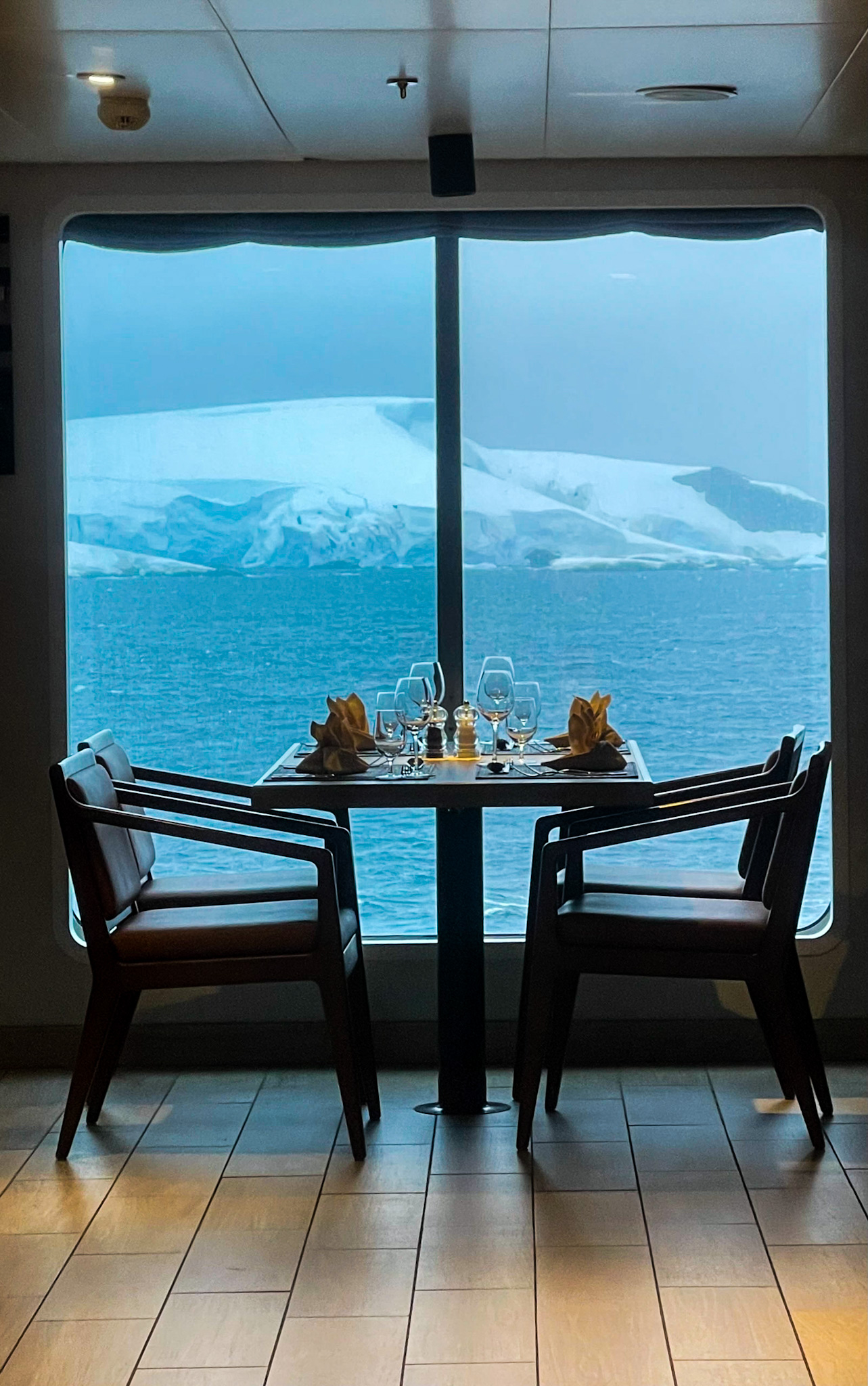
Deck 7 is home to the intimate Bistro 487, featuring an early-riser breakfast, a lunch buffet, tea, snacks and dinners.
Diners gaze through seaward windows to watch gliding birds, jumping whales and majestic icebergs. Our 16-day expedition consumed 300 bottles of red wine, half a ton of meat, 110 pounds of sugar, 165 pounds of seafood, 550 eggs daily … and used 375 rolls of toilet paper.
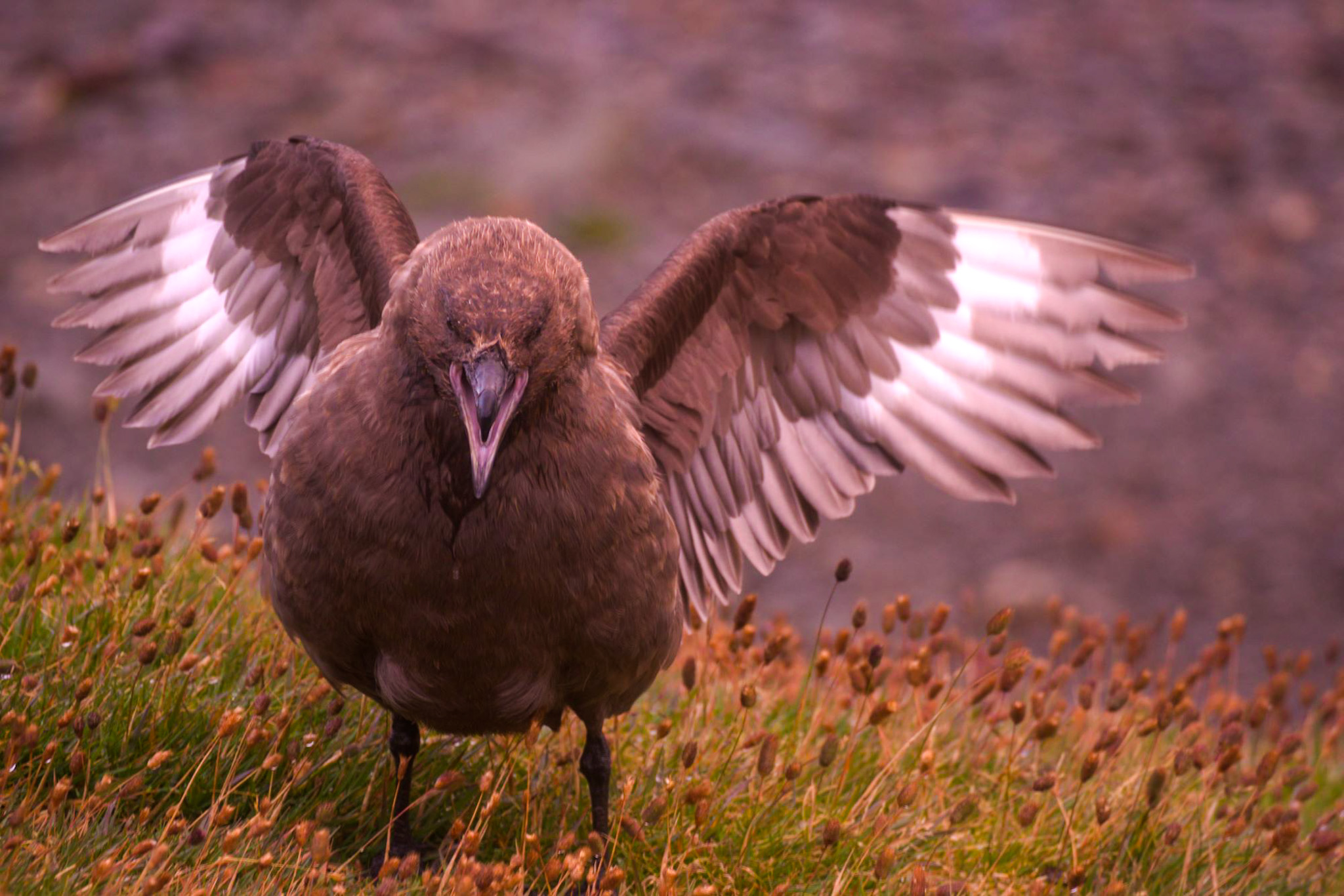
Another bird you will likely encounter on the voyage is the Brown or Antarctic Skua. It’s not the heaviest of birds, weighing in at 5 pounds.
Often seen lurking near penguin rookeries, it feeds on unattended penguin eggs and chicks left unattended by derelict parents. Robust bills clutch away hapless prey.
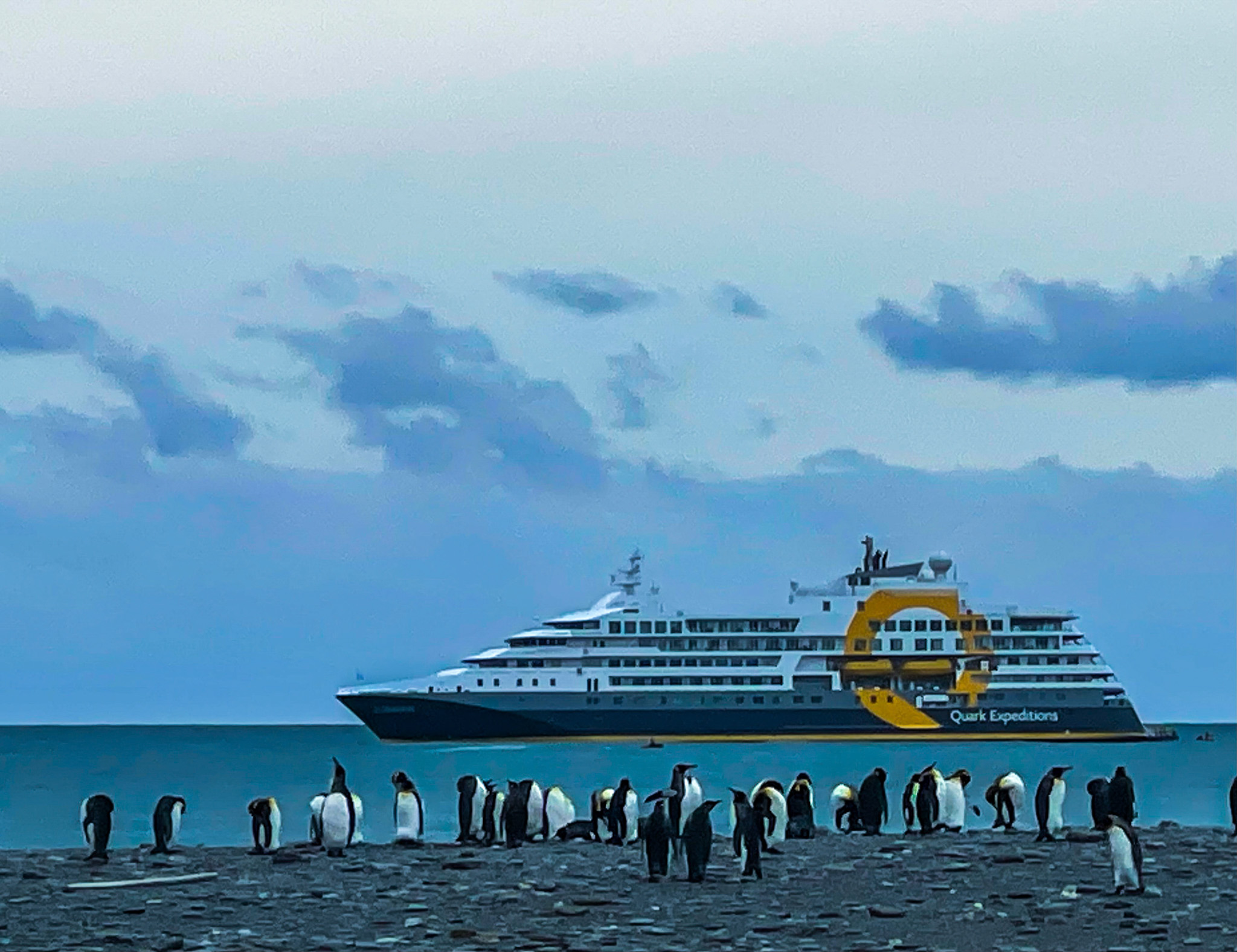
Remote and desolate South Georgia Island is nearly 1,000 miles from its nearest neighbor, the Falkland Islands. The only way to visit is by the sea.
Expedition cruises run in the Antarctic summer season from November to late March. Some of my favorite expedition photos show the ship in the background with guests or fauna in the foreground.
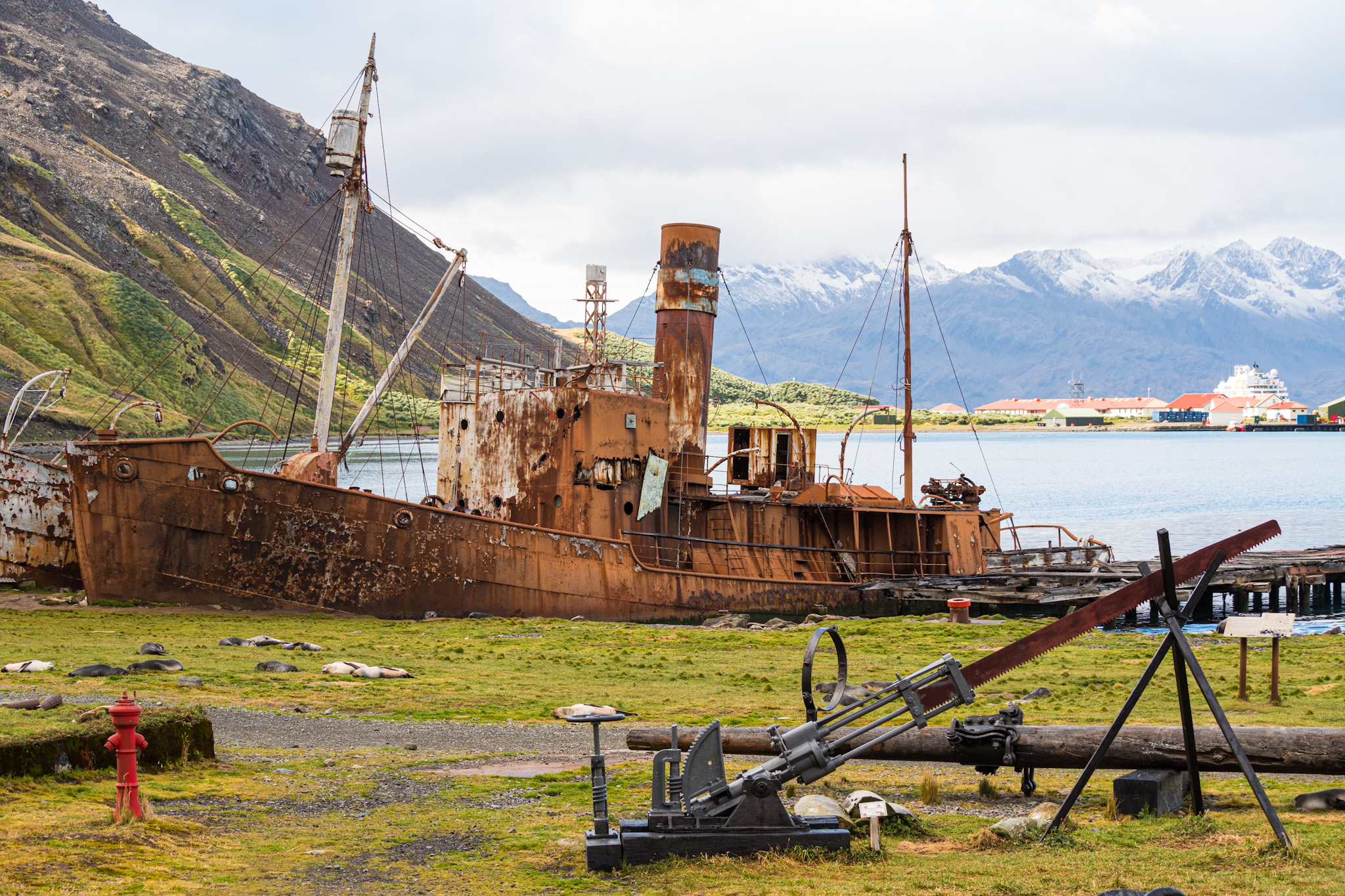
Islands with historical significance have always enthralled me: We learn from our past. Remnants of a storied yet tragic whaling era remain in Grytviken on South Georgia. Whaling operations dominated the 20th century until they ceased in 1966.
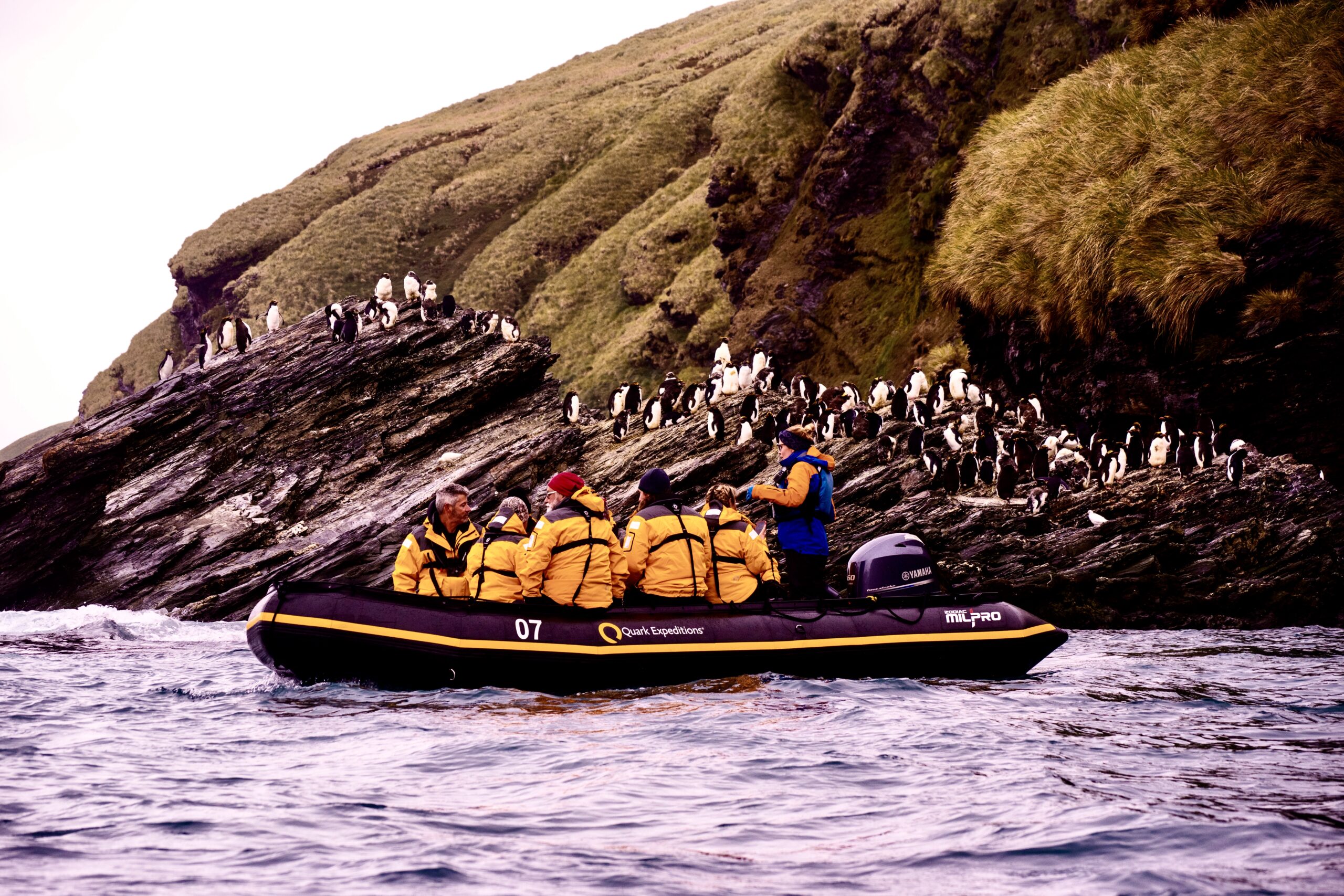
Heavy-duty inflatable zodiacs are the workhorses and primary mode of transportation on expedition cruises. They are necessary for landing on rocky and ice-strewn beaches from where exploration begins.
When landings are impossible, they bring you close to the Antarctic landscape to photograph penguins, seals, whales and birds.
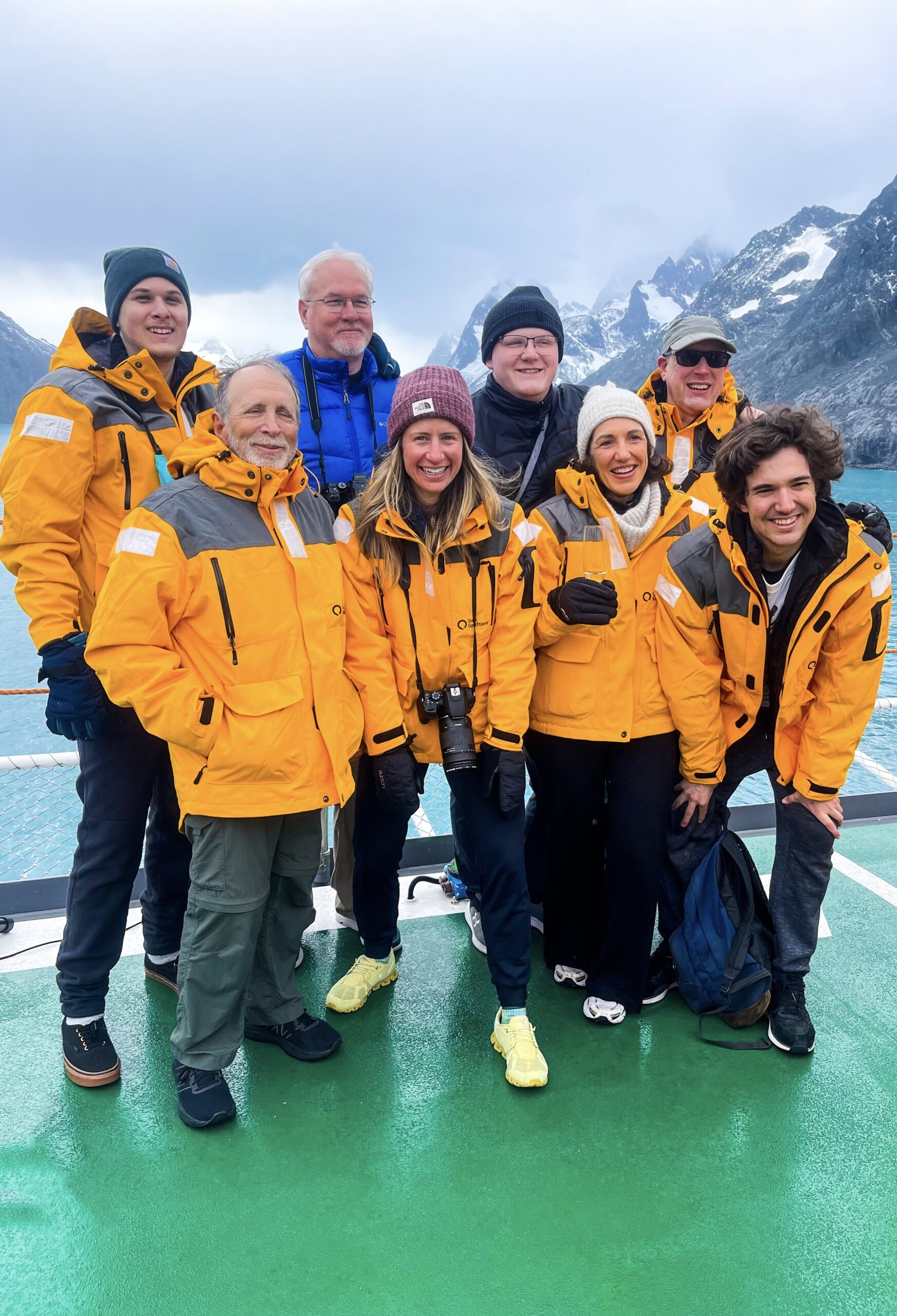
Expedition cruises are a last bastion of adventure for wealthy travelers. As a result, the age range tends to begin at 50, and you’ll find the occasional 80-year-old seasoned veteran on board.
On my Ultramarine sailing, I discovered a younger audience for the first time. Pictured are four parents accompanied by one child.
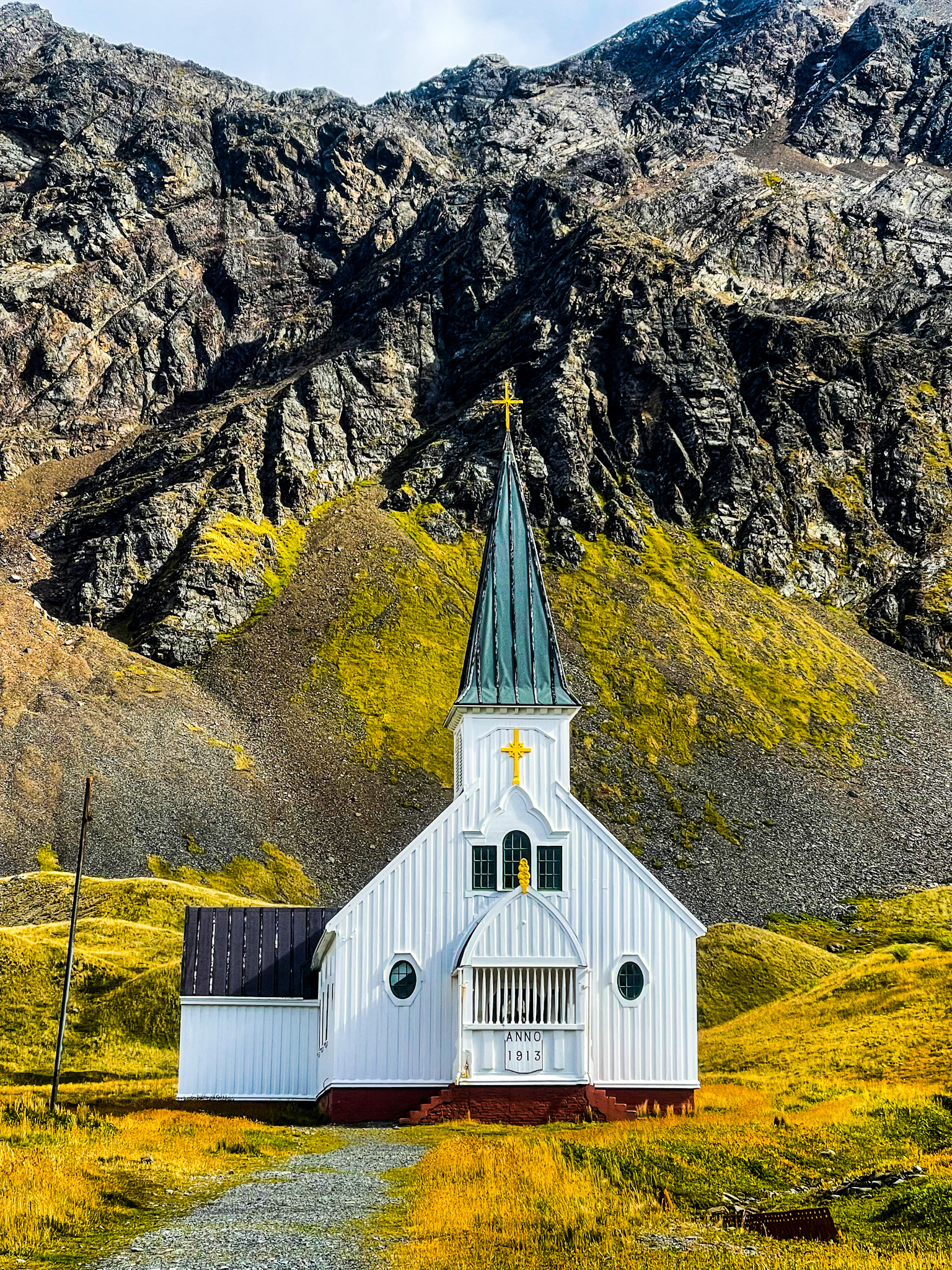
The settlement of Grytviken, established in 1904, has remained closely associated with Ernest Shackleton’s grave site. Grytviken Church was prefabricated in Norway and erected on Christmas Day 1913 by whalers. The church still holds several plaques and memorabilia from the Irish voyager’s last days.
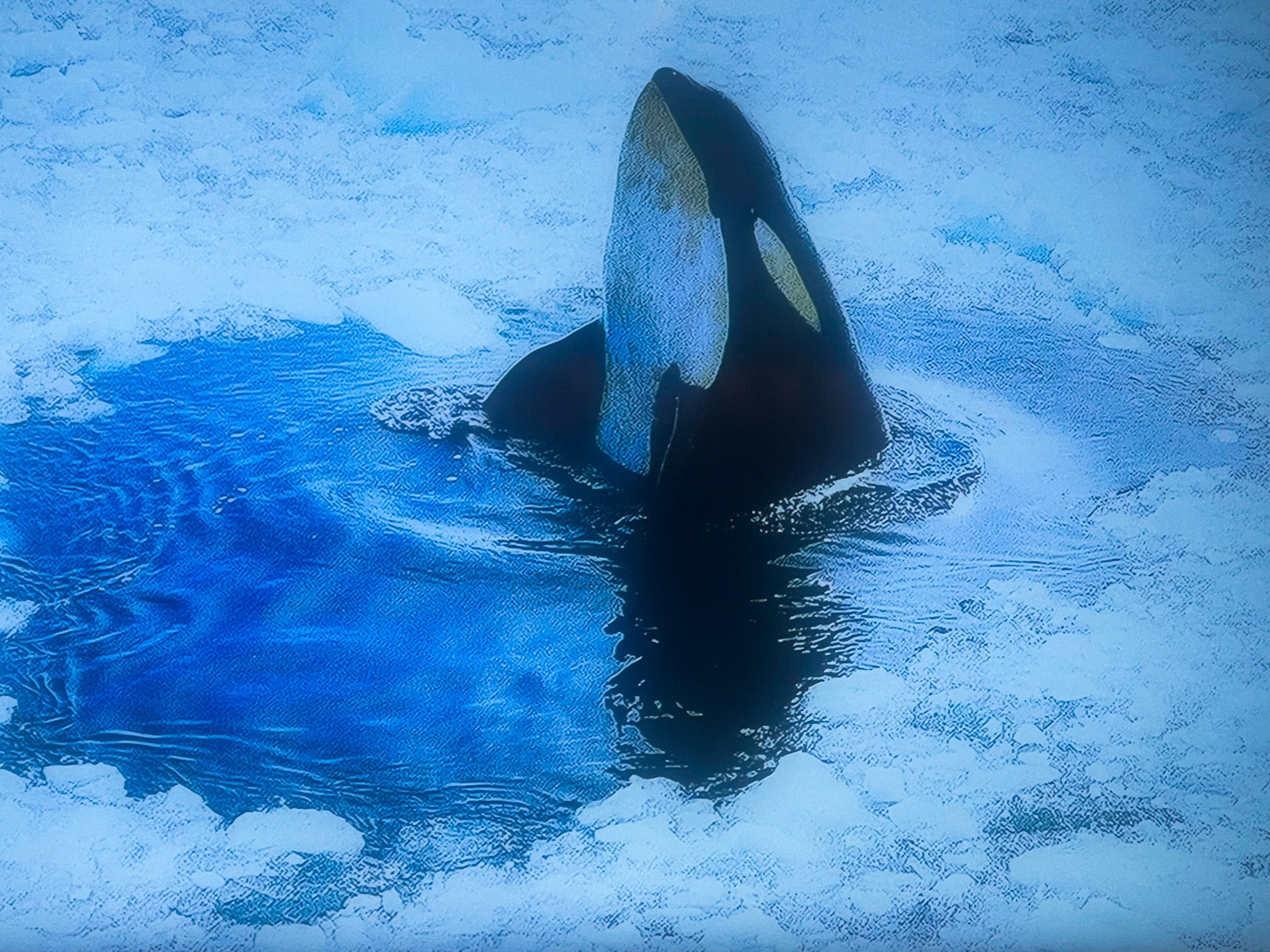
Whales are common in the polar north and south. Whether viewed from the ship’s decks and balconies or up close and personal from zodiacs, whales are a highlight of a trip to Antarctica. Blue, finn, humpback, minke, sperm and orcas were among the whales I saw on my adventure.
Nicknamed “killer whales,” orcas are known for their distinctive white-and-black markings.

The unforgettable beauty of South Georgia Island and Antarctica is accented by their abundant wildlife, including spottings of thousands of penguins, viewed up close by only a fortunate few. Indeed, this wild and untouched destination will forever be etched in my mind.
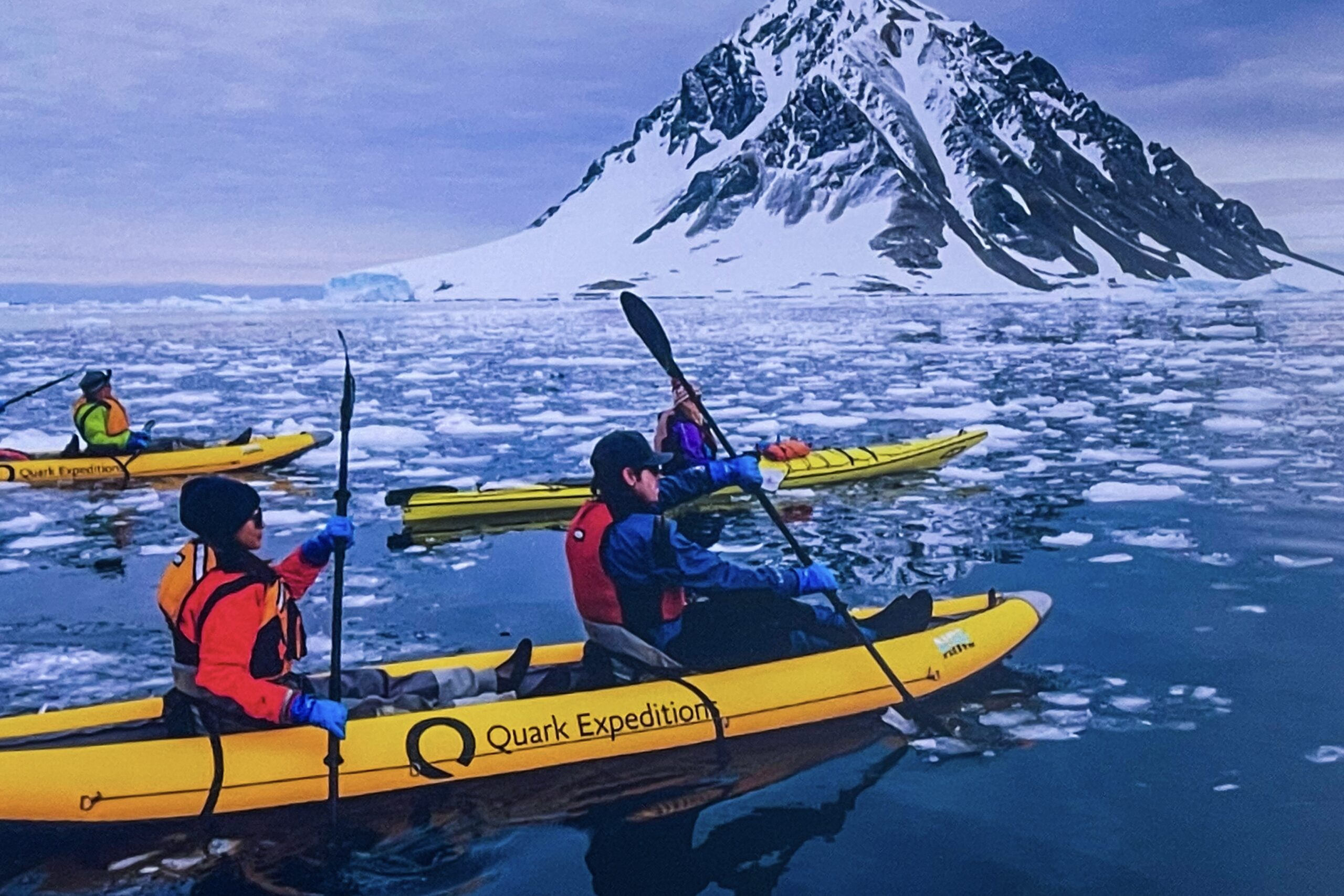
Some Quark guests spend most of their adventure in kayaks or standing up on paddleboards. Led by expert guides, kayaking is immensely popular in the icy waters of polar regions.
Weaving around towering icebergs or in front of glaciers enables many close encounters with wildlife.
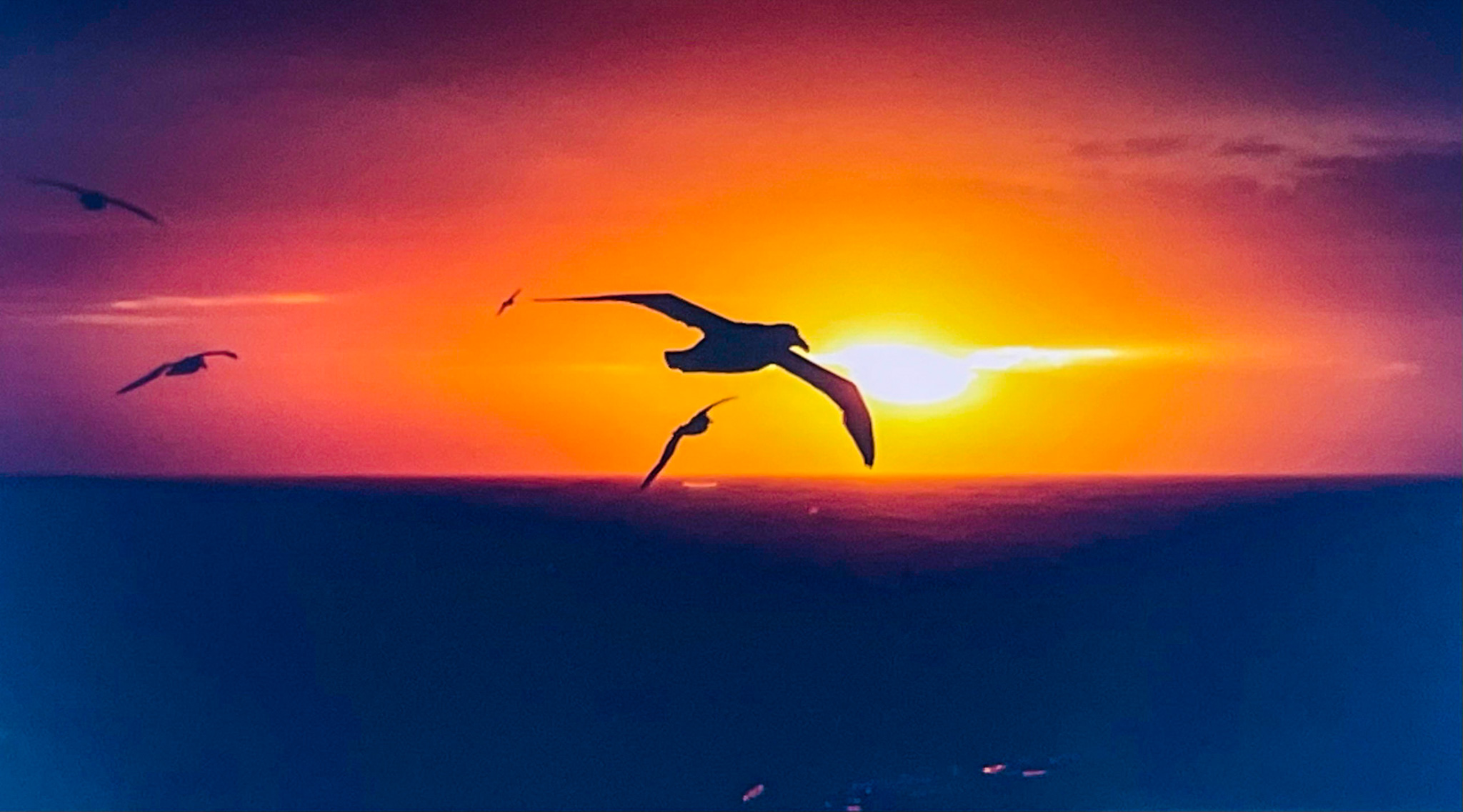
Decks 5 and 7 on the Ultramarine were purposely designed for wildlife watching. Deck 5, with its wrap-around balcony, is commonly used for viewing icebergs, whales and Antarctic birds like the albatross.
The expedition adage of being out on the decks as much as possible parallels the photographer’s mantra of getting up early and staying up late for excellent lighting to capture sunrise and sunset photos.
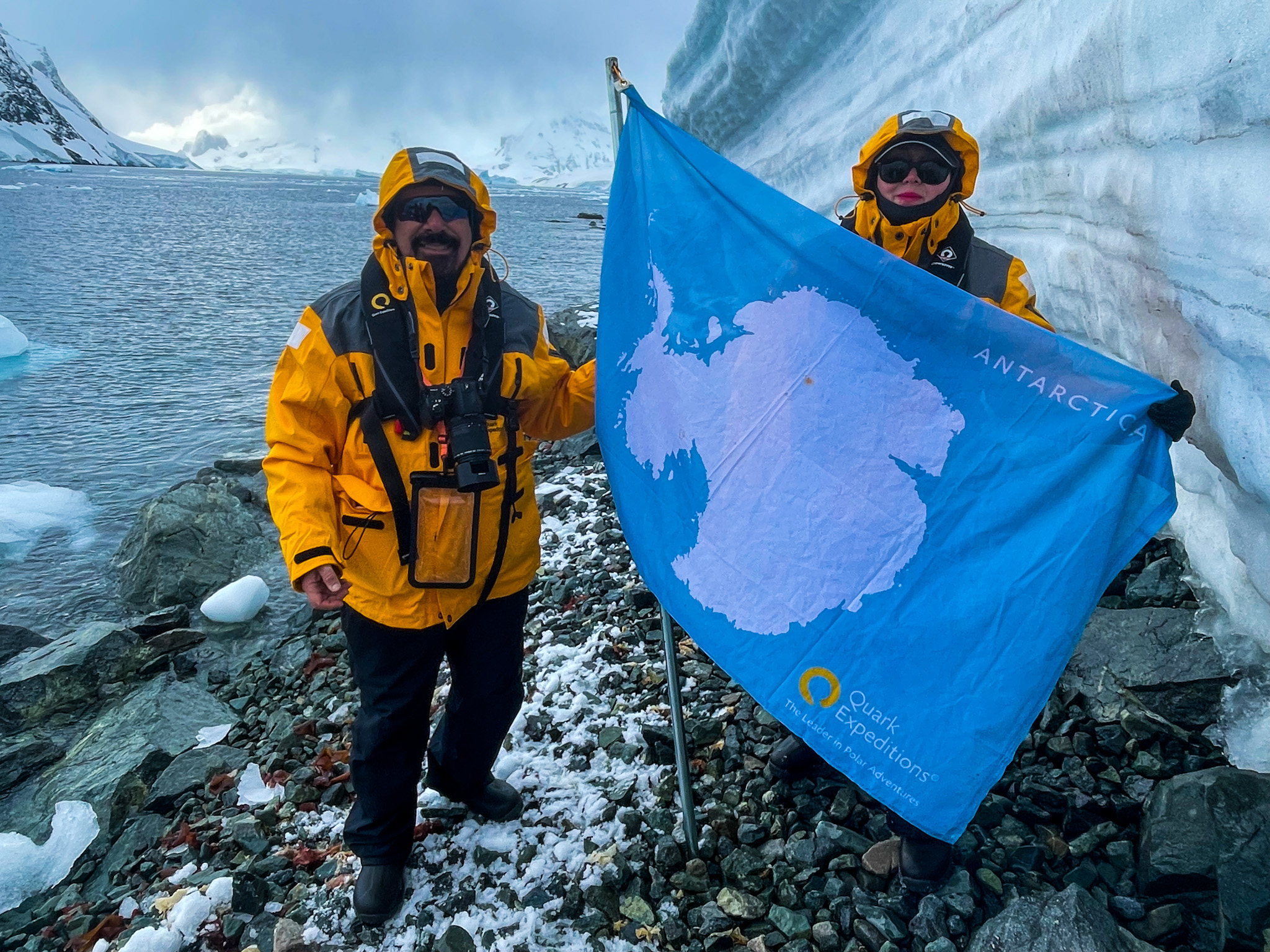
A highlight for any global explorer, and one of many thrilling moments during the two-week journey, is planting your feet in Antarctica, where pictures are taken hoisting Quark’s flag of the southernmost continent.
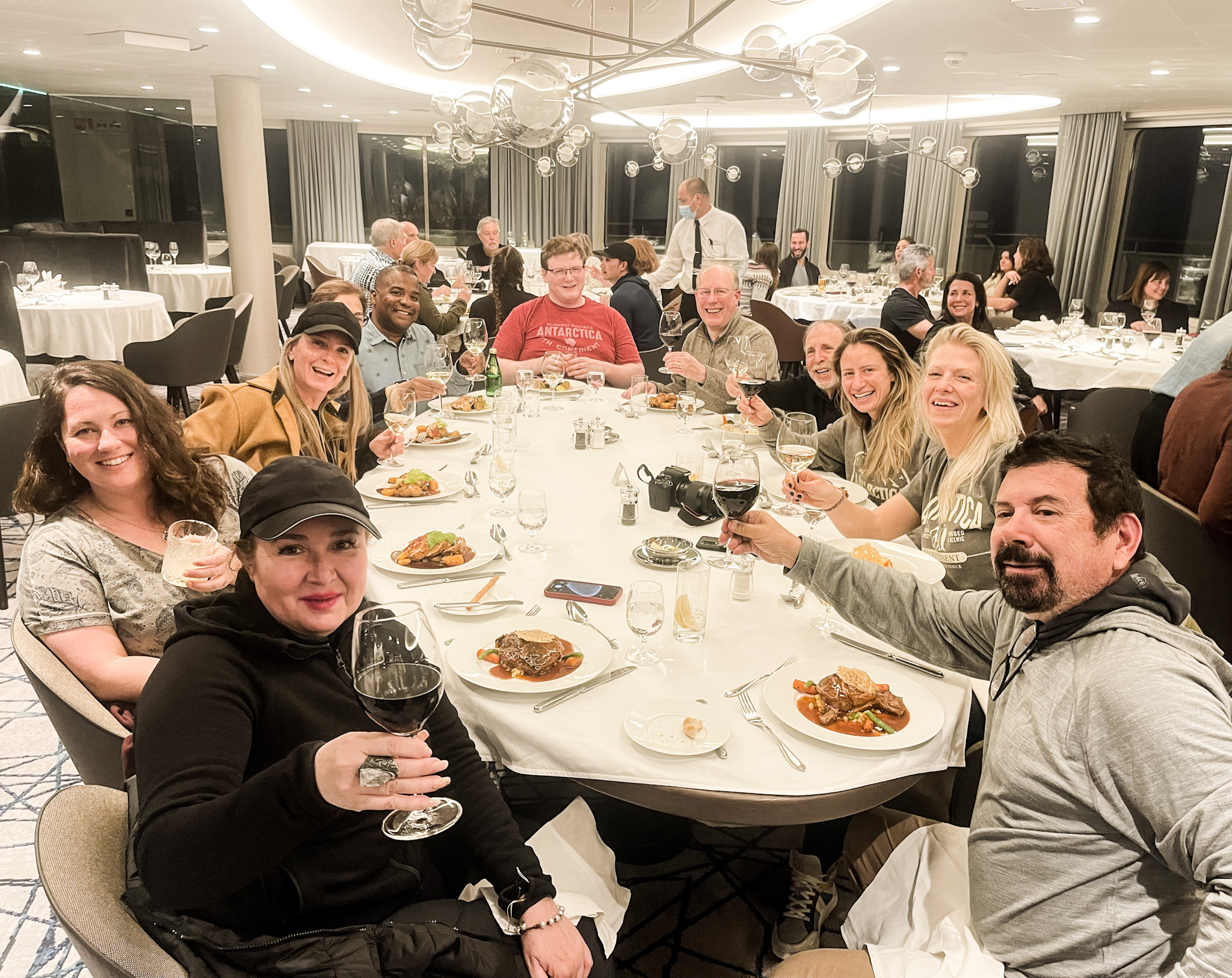
Expedition sailings are intimate affairs with other like-minded explorers. The chances of making lifelong friends are very probable.
Upscale dining with three meals per day can be as private as a couple seated at a table for two, or sitting with a group of new friends at a larger table, as in the Balena Restaurant.
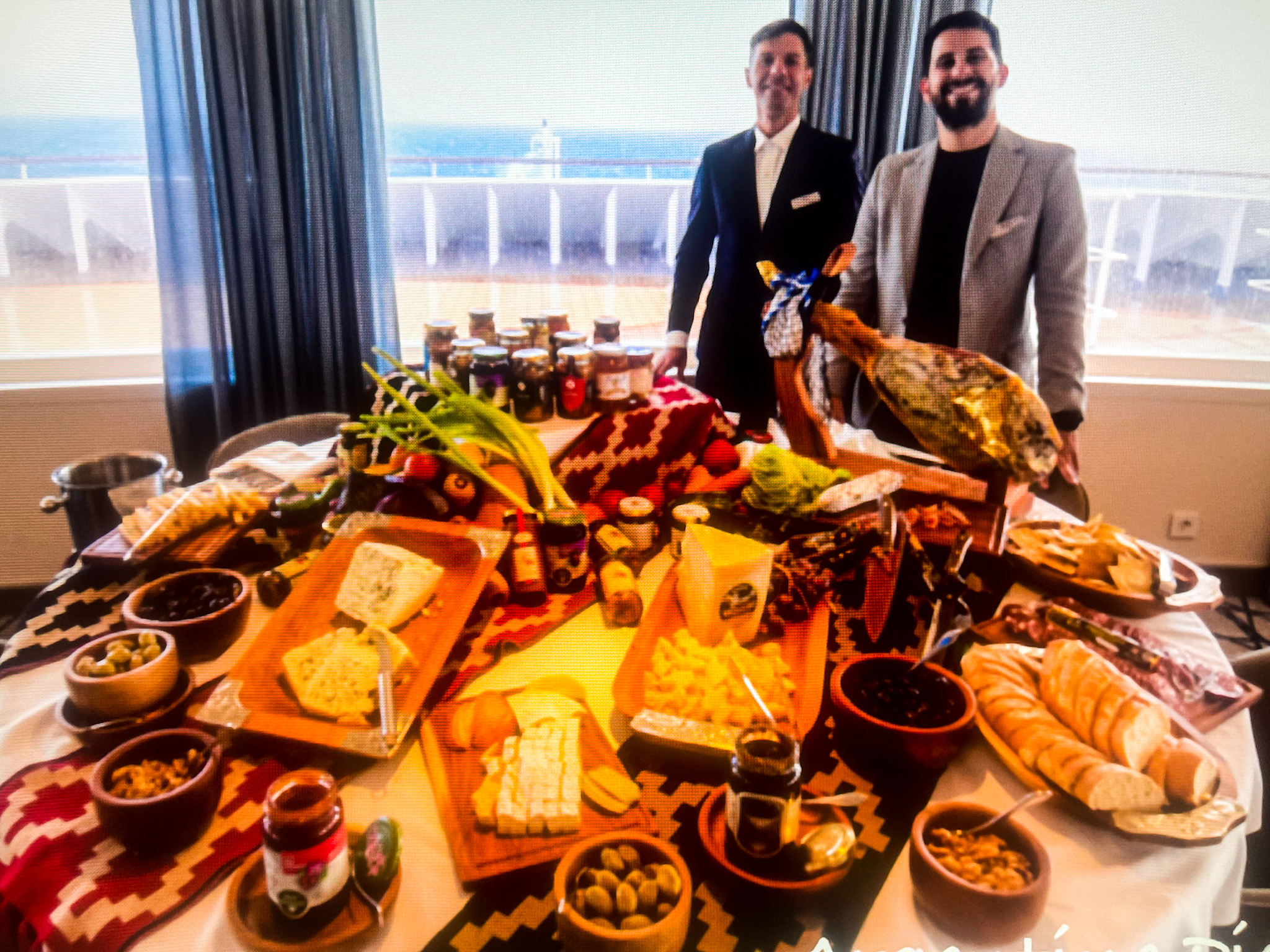
Sea crossings take several days. The luxe expedition allows Quark to test innovative new programs. Among them is UnQuarked, an Argentine wine experience with nightly pairings and tastings. They are showcased by two onboard sommeliers from Buenos Aires, who present local wines and bites.
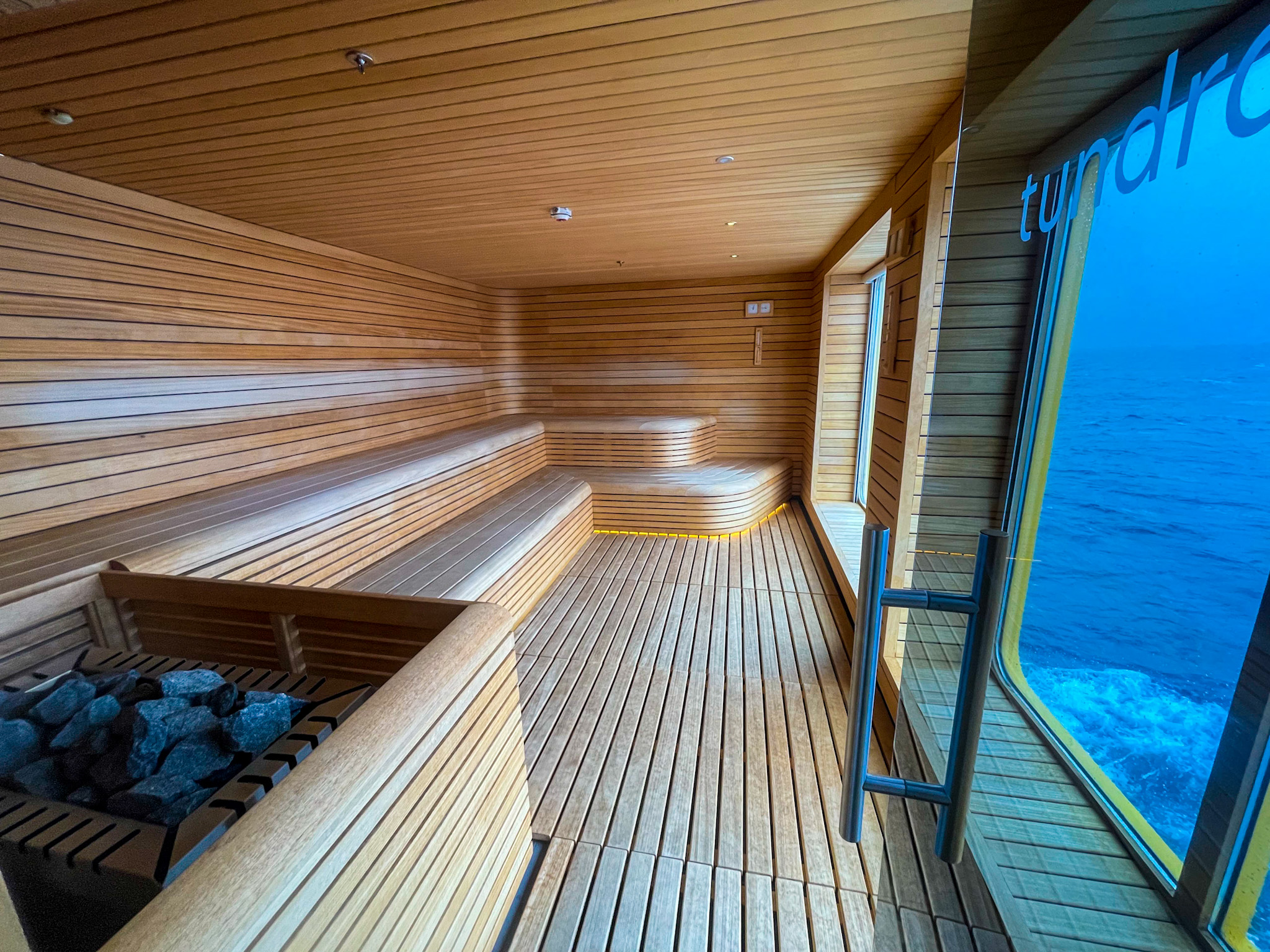
On polar expeditions, days at sea are a way of life. On Deck 7, the Tundra Spa is an excellent addition to Ultramarine’s purpose-built design from scratch. Large floor-to-ceiling restaurants look out to sea. A gym and spa feature a variety of treatments.
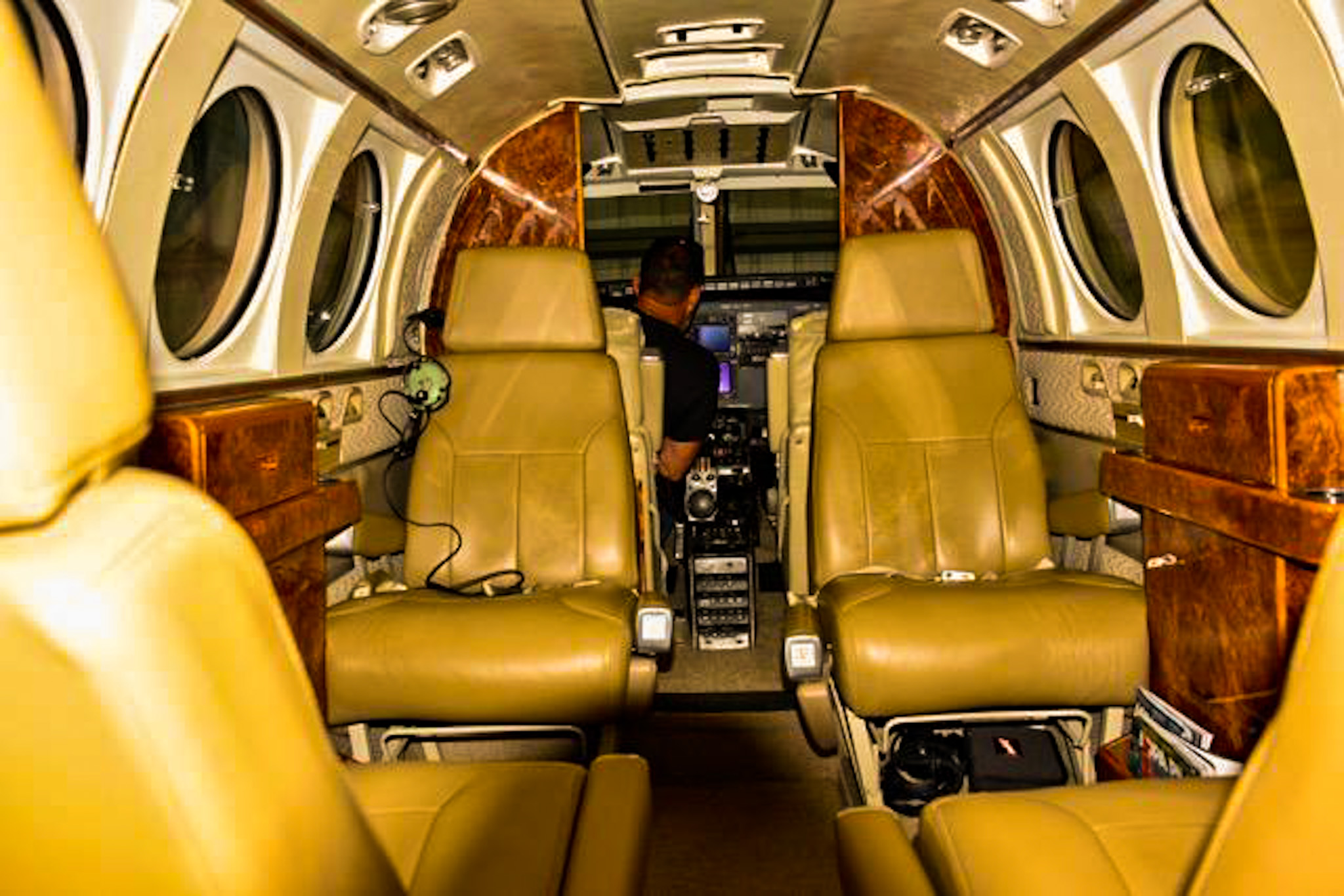
Inside the sleek, plush, twin-engine Airbus H145, weather permitting, Quark’s highly trained pilots and expedition team will attempt to get you in the air for astounding aerial views of the icy polar peaks below.
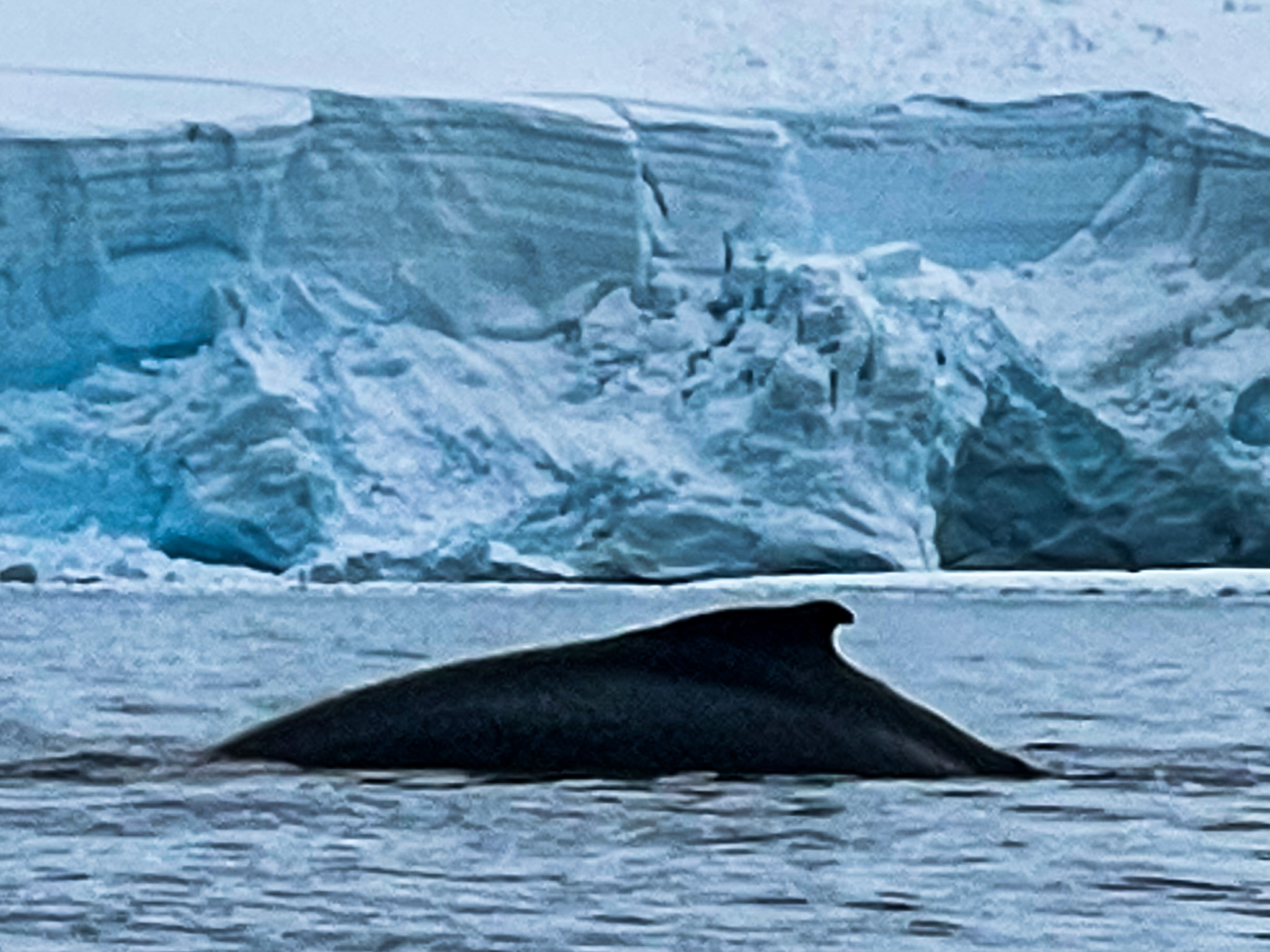
Nowhere else on earth flaunts the remoteness and splendor of the unknown than the white continent. Exploring polar regions with world-class experts is the Quark motto.
In the Antarctic summer, there are incredible encounters with wildlife. The awe-inspiring penguin safari to South Georgia far exceeds expectations.
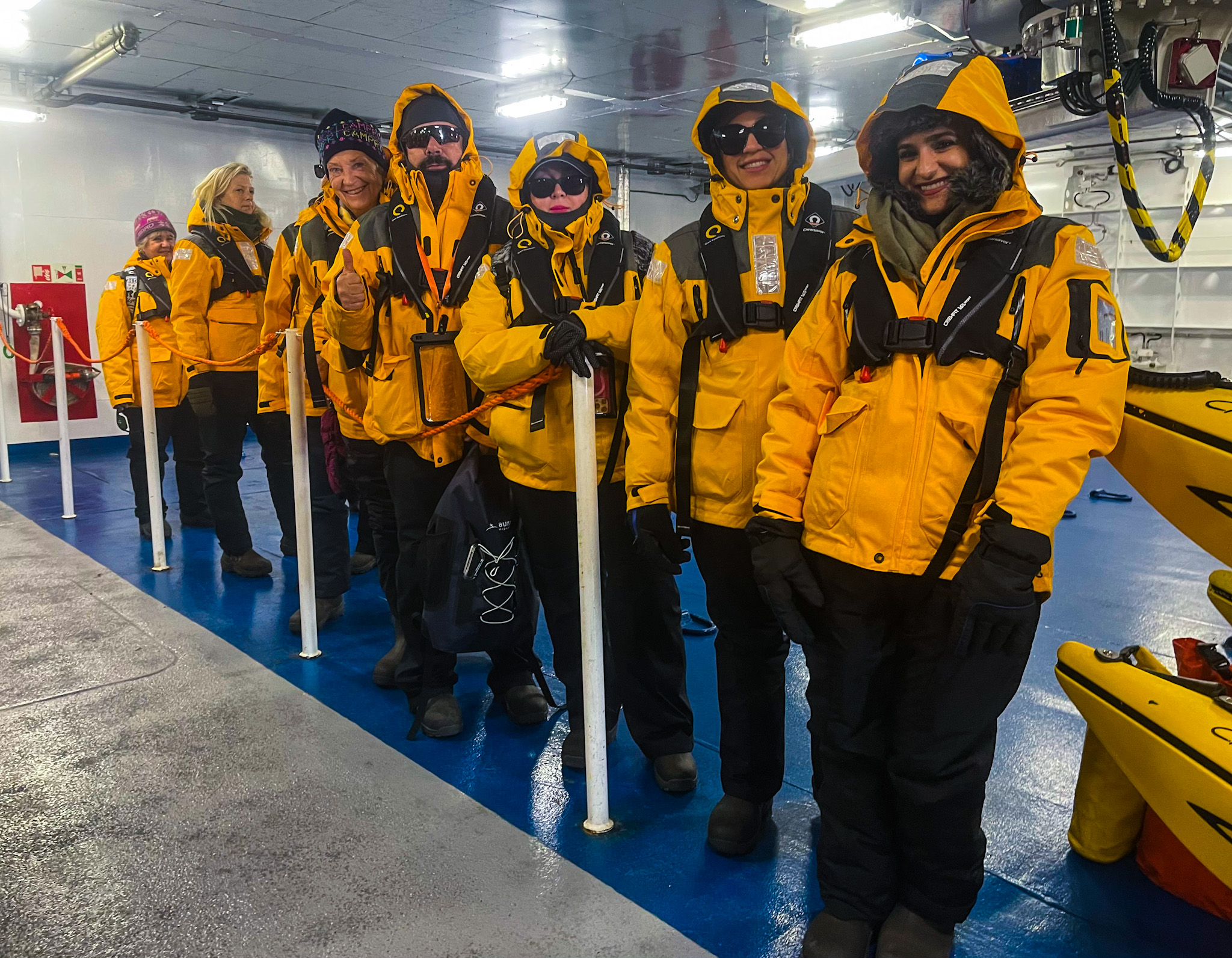
The Ultramarine is designed for quick zodiac departures to breathtaking polar topography. On deck 2, twin rooms with assigned lockers house tall, protective muck boots, parkas and waterproof gear. Most days consist of morning and afternoon shore expeditions or coastline cruises.
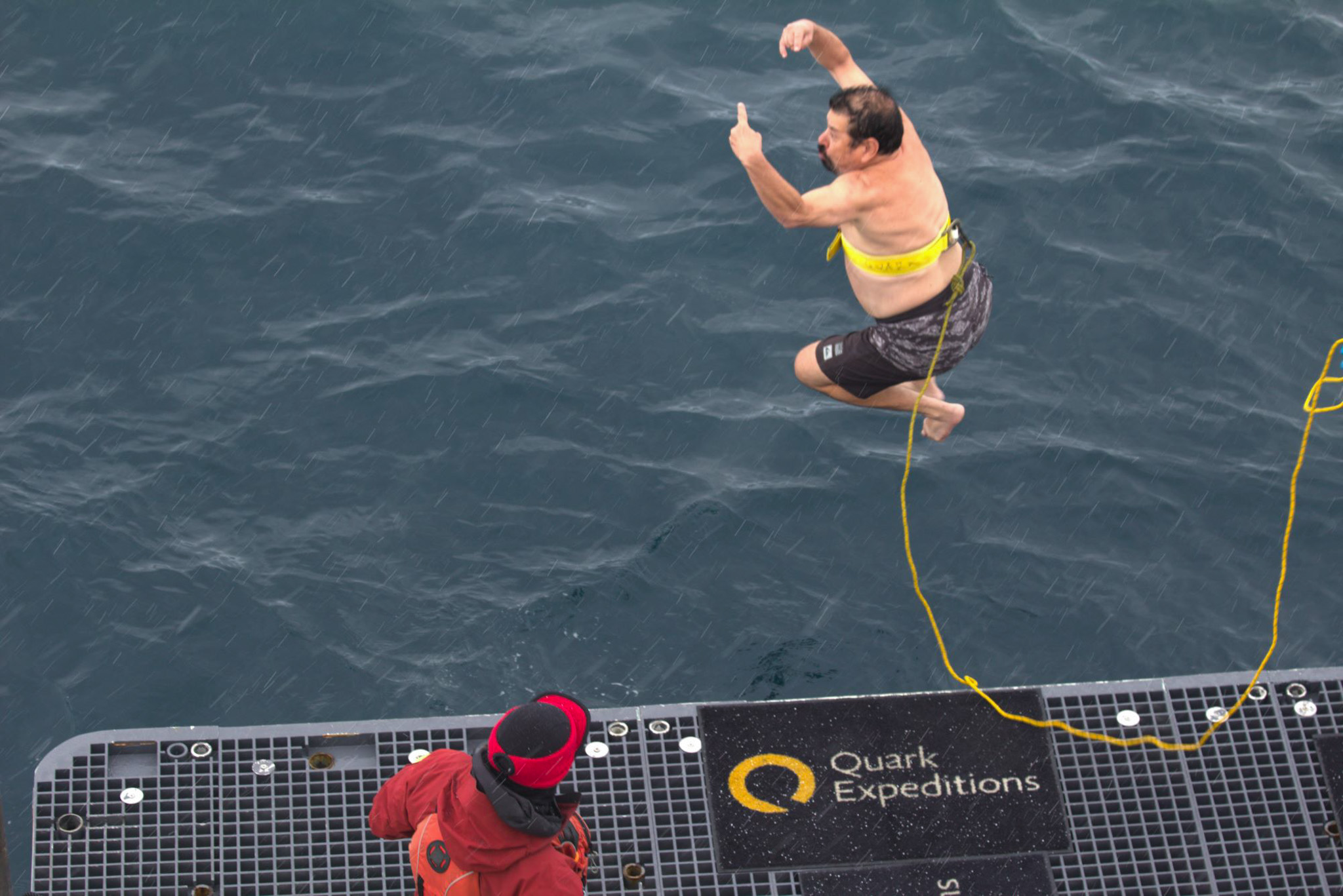
Nearly half of the guests on my sailing took the polar rite of passage, plunging into the freezing Antarctic waters. While attached to a safety rope towards the journey’s end, I completed my descent into frigid polar waters.
Upon returning onboard, vodka shots warmed me up quickly. I was in the sea for fewer than 30 seconds.
Also Read: A Mendocino Meander

